#wien modern 2014
Explore tagged Tumblr posts
Text
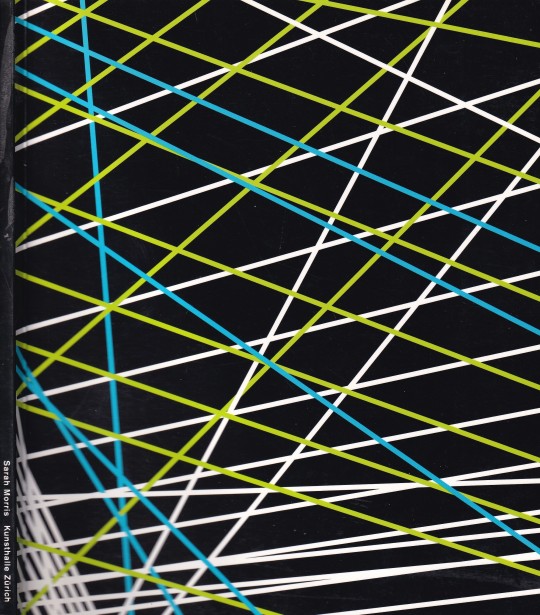
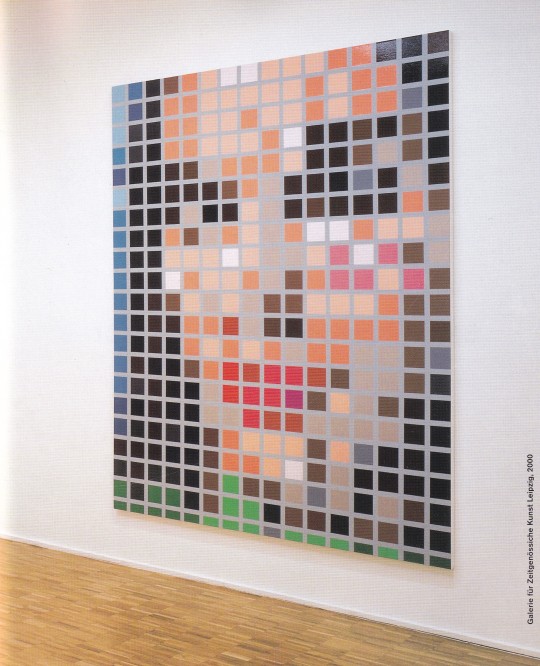
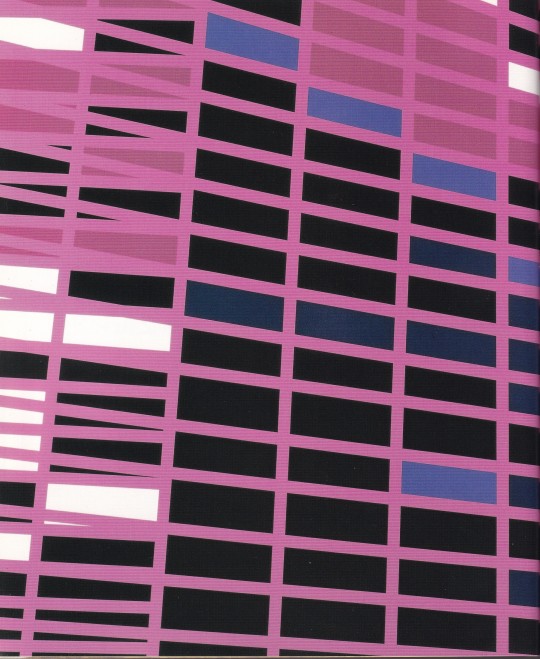
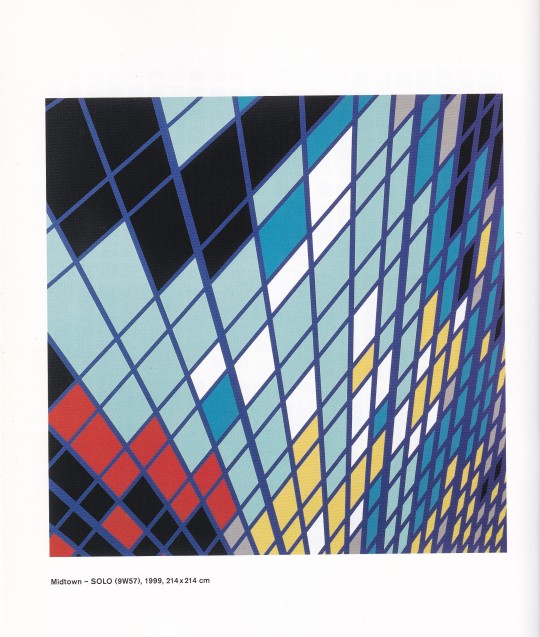
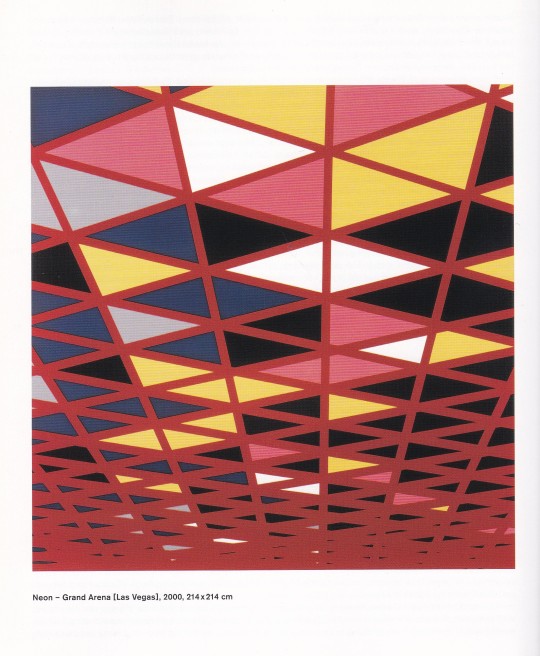
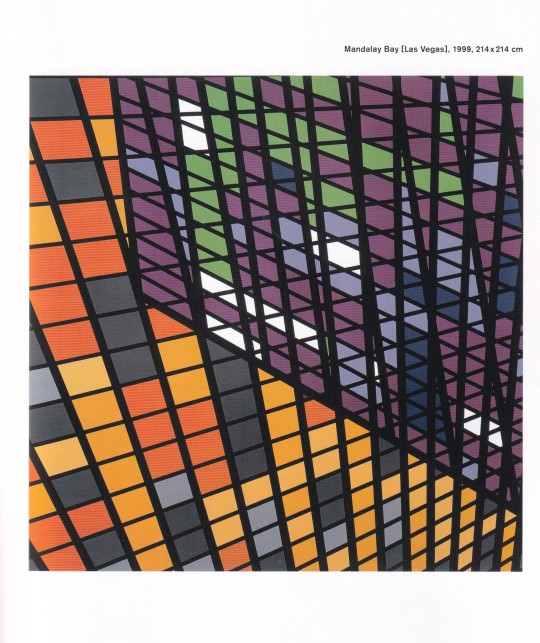
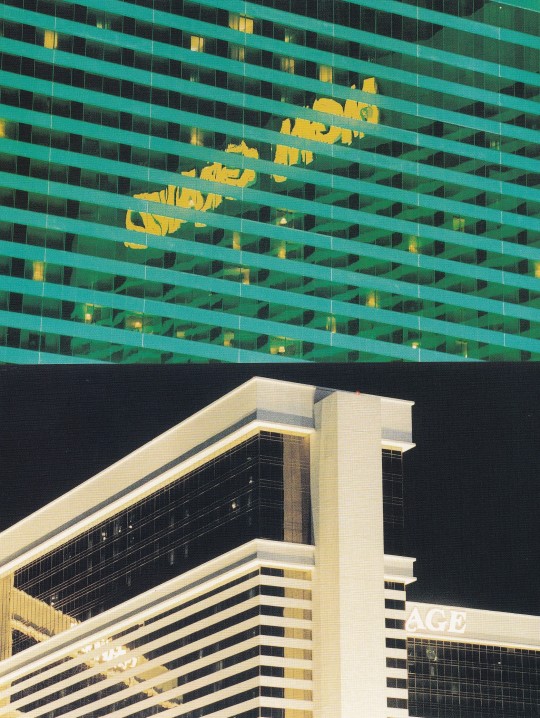
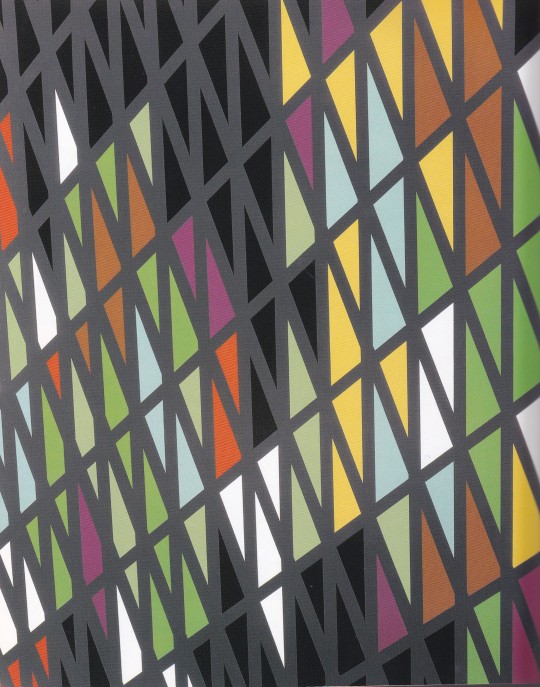
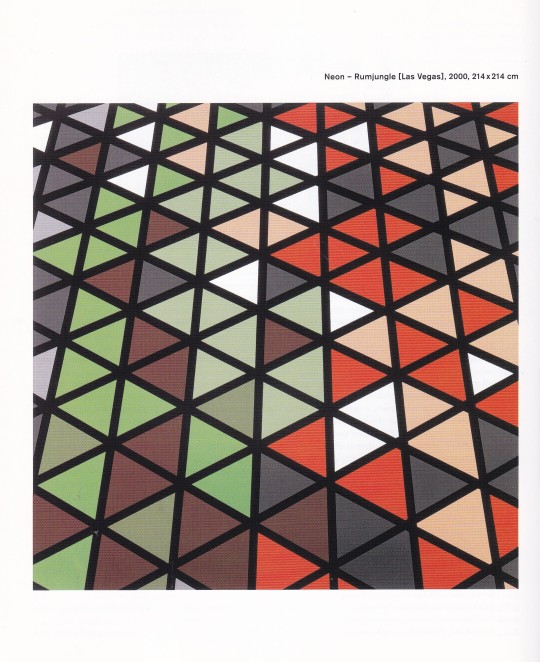
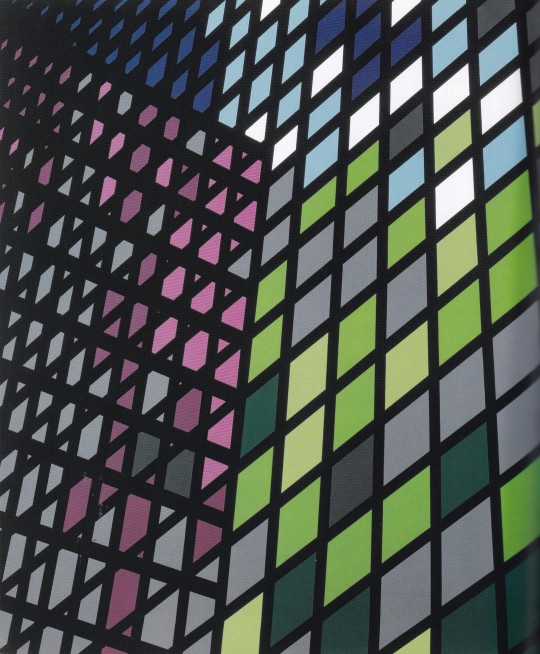
Sarah Morris
texts by Bernhard Bürgi, Diedrich Diederichsen, Sarah Morris, David Daniel
Kunsthalle Zürich 2000, 80 pages,with 54 color images, 21x24,5cm, German/Engl.
euro 50,00
email if you want to buy [email protected]
Exhibition Zürich 07/06 13/08 2000
Sarah Morris (b. 1967 in Sevenoaks, Kent, England) lives and works in New York City, USA. Morris studied at the Brown and Cambridge Universities and participated in the Independent Study Program of the Whitney Museum of American Art. She is best known for her large-format raster works.
Her works have been presented in solo shows at institutions including the Philadelphia Museum of Modern Art, Philadelphia, USA (2000), Kunsthalle Zürich, Zurich, Switzerland (2000, 2012); Hamburger Bahnhof, Berlin, Germany (2000, 2001); Hirshhorn Museum, Washington D.C., USA (2002); Miami MOCA, Miami, USA (2002); Moderna Museet, Stockholm, Sweden (2005); Palais de Tokyo, Paris, France (2005); Städtischen Galerie in Lenbachhaus, Munich, Germany (2008); Fondation Beyeler, Basel, Switzerland (2008); Museum für Moderne Kunst, Frankfurt am Main, Germany (2009); Fondation Louis Vuitton in Paris, France (2014), Kunsthalle Wien, Wien, Austria (2016, 2017) and EMMA - Espoo Museum of Modern Art, Espoo, Finland (2017).
11/01/24
#Sarah Morris#art exhibition catalogue#Kunsthalle Zürich 2000#abstraction#architecture#graphics#art books#fashionbooksmilano
3 notes
·
View notes
Text
Sheelasha Rajbhandari & Hit Man Gurung
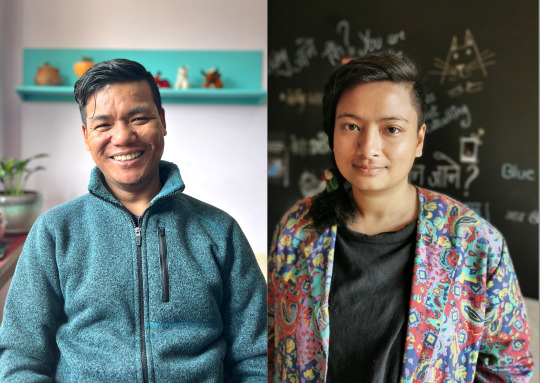
Mardi 12 décembre 2023 à 17h (heure de Paris)
Tuesday December 12th 2023, 5pm (Paris time)
Co-commissaires de la 17e Biennale Jogja 2023 et de Colomboscope 2024 / Co-curators for 17th Biennale Jogja 2023 and Colomboscope 2024
Sheelasha Rajbhandari (née en 1988) est une artiste et une curatrice opérant partir de Katmandou. Ses travaux s'appuient sur une lignée de féminités incarnées et spéculatives pour remettre en question le positionnement des femmes à travers le temps, les paysages et les cosmologies. Sa pratique incite à réfléchir au-delà de la conception néolibérale du temps, afin de décentrer les structures patriarcales qui perpétuent les cycles d'extraction industrielle et d'épuisement individuel. Pour elle, l'art consiste à créer un espace pour l'action collective. Ce questionnement alimente sa récente approche artistique et curatoriale qui recompose les notions d'indigénéité, de genre, de valeur et de productivité. Elle a été co-commissaire de la Triennale Katmandou2077, du Pavillon du Népal à la Biennale de Venise (2022), de "Garden of Ten Seasons" à Savvy Contemporary, Berlin (2022) et de "12 Baishakh", Bhaktapur (2015) aux côtés de Hit Man Gurung. Son installation textile a été exposée au Museum of Art and Design de New York (2022) et au Footscray Art Center de Melbourne (2022). Son installation dans l'exposition itinérante " A beast, a god and a line " (2018-2020) a été présentée à Para Site, Hong Kong ; TS1, Yangon ; Museum of Modern Art, Varsovie ; Kunsthall, Trondheim ; et MAIIAM Contemporary Art Museum, Chiang Mai. Elle a également été artiste en résidence au Bellas Artes Projects (2019) et au Para Site (2017). Elle a en outre exposé au Weltmuseum Wien (2019) et à la Triennale de Katmandou (2017). Dans le cadre de son collectif, elle a participé au Dhaka Art Summit (2020) et à la Biennale de Sydney (2020). Elle est également cofondatrice d'ArtTree Nepal, un collectif d'artistes, et d’un espace artistique, Kalā Kulo.
Hit Man Gurung (né en 1984) est un artiste et un curateur basé à Katmandou. Ses diverses pratiques s'intéressent au tissu des mobilités humaines, aux frictions de l'histoire et aux échecs des révolutions. Bien qu'ancrés dans l'histoire récente du Népal, ses travaux démêlent un réseau complexe de liens de parentés et d'extractions à travers les géographies qui soulignent l’exploitation inhérente au capitalisme. Ces récits tournent autour des expériences vécues par les migrant·e·s, pris·e·s entre une industrie transnationale déshumanisante fondée sur le travail, et un État-nation apathique. Il invoque en outre les méthodologies et épistémologies indigènes pour reconfigurer dans ses fondements la praxis artistique contemporaine. Il a été co-commissaire de la Triennale de Katmandou2077 (2022), du Pavillon du Népal à la Biennale de Venise (2022), de "Garden of Ten Seasons" à Savvy Contemporary, Berlin (2022) et de "12 Baishakh", Bhaktapur (2015), aux côtés de Sheelasha Rajbhandari. Il a également cofondé ArtTree Nepal, un collectif d'artistes, et l’espace artistique Kalā Kulo. Il a participé à des expositions à SAVVY Contemporary, Berlin (2020) ; Biennale de Sydney (2020) ; Artspace Sydney (2019) ; Weltmuseum Wien (2019) ; Kathmandu Triennale (2017) ; Yinchuan Biennale (2016) ; Para Site, Hong Kong (2016) ; Asia Pacific Triennial of Contemporary Art, Brisbane (2015-16) ; et Dhaka Art Summit (2014, 2016, 2018, 2020).
[EN] Sheelasha Rajbhandari (b. 1988) is an artist and curator based out of Kathmandu. Her works draw upon an embodied and speculative lineage of femininities to question the positioning of women across time, landscapes, and cosmologies. Her practice is a provocation to reflect beyond neo-liberal conception of time in order to decenter patriarchal structures that perpetuate cycles of industrial extraction and individual exhaustion. For her, art-making is about making space for collective action. This questioning feeds into her recent artistic and curatorial approach that recompose notions of Indigeneity, gender, worth, and productivity. She co-curated the Kathmandu Triennale 2077, Nepal Pavilion at Venice Biennale (2022), ‘Garden of Ten Seasons’ at Savvy Contemporary, Berlin (2022) and ’12 Baishakh,’ Bhaktapur (2015) alongside Hit Man Gurung. Her textile installation was exhibited at Museum of Art and Design; NewYork (2022), Footscray Art Center; Melbourne ( 2022). Her installation in the traveling exhibition “A beast, a god and a line” (2018-2020) was presented at Para Site, Hong Kong; TS1, Yangon; Museum of Modern Art, Warsaw; Kunsthall, Trondheim; and MAIIAM Contemporary Art Museum, Chiang Mai. She has also been an artist in residence at the Bellas Artes Projects (2019) and Para Site (2017). She has furthermore exhibited at Weltmuseum Wien (2019); and Kathmandu Triennale (2017). As a part of her collective, she has been a part of Dhaka Art Summit (2020) and Biennale of Sydney (2020). She is also the co-founder of ArtTree Nepal, an artist collective and Kalā Kulo, an arts initiative.
Hit Man Gurung (b. 1984) is an artist and curator based in Kathmandu by way of Lamjung. Gurung’s diverse practice concerns itself with the fabric of human mobilities, frictions of history, and failures of revolutions. While rooted in the recent history of Nepal, his works unravel a complex web of kinships and extraction across geographies that underscore the exploitative nature of capitalism. These narratives revolve around the lived experiences of migrants caught between a dehumanizing transnational labor-based industry and an apathetic nation-state. He furthermore invokes Indigenous methodologies and epistemologies to fundamentally reconfigure contemporary artistic praxis. Gurung is one of the curators for 17th Biennale Jogja 2023 and Colomboscope 2024. He was co-curator for the Kathmandu Triennale 2077 (2022), Nepal Pavilion at Venice Biennale (2022), ‘Garden of Ten Seasons’ at Savvy Contemporary, Berlin (2022) and ’12 Baishakh,’ Bhaktapur (2015) alongside Sheelasha Rajbhandari. He has also co-founded ArtTree Nepal, an artist collective and Kalā Kulo, an arts initiative. He has participated in exhibitions at SAVVY Contemporary, Berlin (2020); Biennale of Sydney (2020); Artspace Sydney (2019); Weltmuseum Wien (2019); Kathmandu Triennale (2017); Yinchuan Biennale (2016); Para Site, Hong Kong (2016); Asia Pacific Triennial of Contemporary Art, Brisbane (2015-16); and Dhaka Art Summit (2014, 2016, 2018, 2020)
Programmation et prochains rendez-vous sur ce site ou par abonnement à la newsletter : [email protected]
Pour regarder les séminaires antérieurs : http://www.vimeo.com/sysk/
Séminaire conçu et organisé par Patricia Falguières, Elisabeth Lebovici et Natasa Petresin-Bachelez et soutenu par la Fundación Almine y Bernard Ruiz-Picasso para el Arte
1 note
·
View note
Text
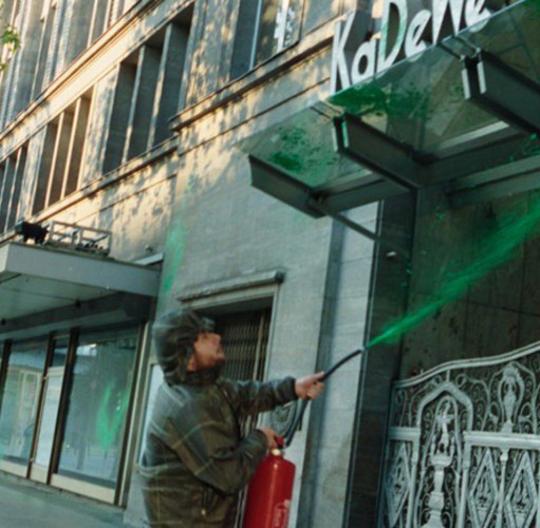
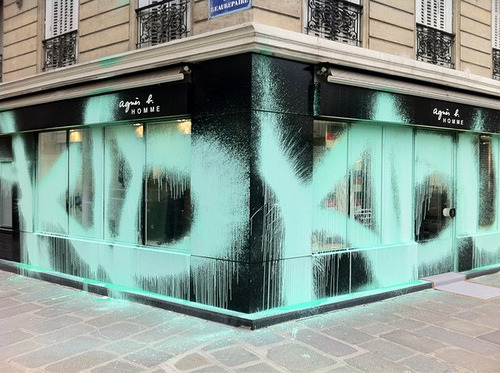
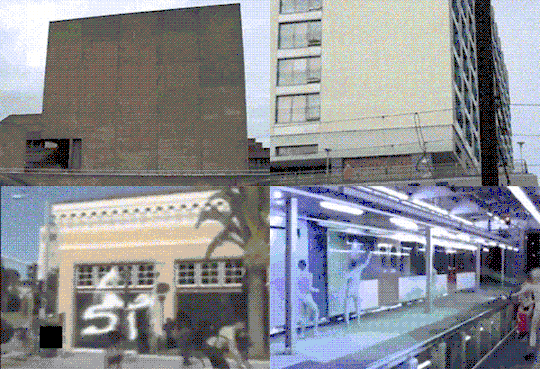
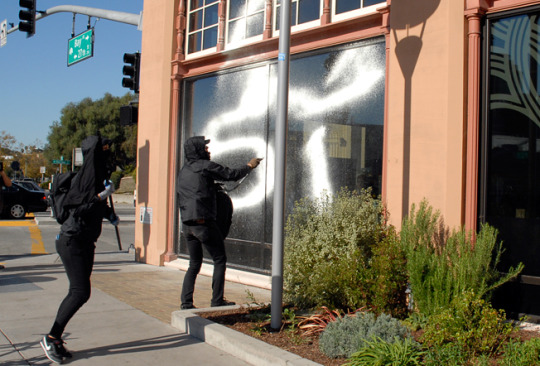
Brad Downey 2008
Kidult 2011
Occupy Oakland
Die Verwendung von Feuerlöschern für Proteste gibt es seit ca. 10 Jahren. Feuerlöscher-Graffiti stammt von Gangs in LA, wurde dann von Graffiti-Writern verwendet, wurde um 2007 populärer, vor allem in NY und Paris (Nug, Psy, Toam, Katsu, Kidult, Krink) und dann in Berlin mit Just und Thrill, aber auch Aktionen wie Brad Downey, der 2008 die Berliner Schaufenster von Lacoste grün färbte, dann verbreitete es sich über das Internet, begann bei Protesten wie Occupy Oakland 2011 verwendet zu werden, Studentenprotesten in Italien 2013, Antifa-Markierung faschistischer Modegeschäfte in Berlin ca. 2012, weitere antikapitalistische Proteste in Italien, insbesondere in Mailand, in den folgenden Jahren (wie der No Expo Protest 2015). Seit 2019 wird es in den Klimaprotesten aufgegriffen, von Extinction Rebellion, Just Stop Oil und jetzt der Last Generation/Letzte Generation.
Animierte Collage 2014 in Essay über Feuerlöschergraffiti
"So war einmal zu lesen, dass Cyprien Gaillard am Rande eines Interviews Banksy seine „Verfehlinterpretation von Vandalismus“ vorwarf, wie er das genau gemeint hat bleibt erstmal unklar, aber greifen wird das auf. Banksy hat vor circa zehn Jahren ein großes brutalistisches minimalistisches Betongebäude mit einem Feuerlöscher beschriftet. BORING hat er darauf geschrieben. Eine langweiligere Aktion ist eigentlich kaum vorstellbar. Der Künstler Banksy hat es sicher geschafft, eine ästhetische Geste auszuführen, einem banalen Kommentar eine ähnliche brutale Dimension zu geben wie das brutalistische Gebäude. Doch der Vandale Banksy verfälscht die Aktion dadurch, dass er ein Video davon mit getragener Musik unterlegt, um sich als den kleinen Mann ganz groß zu inszenieren, der mit roter Farbe die große graue Welt symbolisch besiegt. Er knüpft an das verbreitete Missverständnis gegenüber moderner Architektur an, dass sie menschenfeindlich sei, weil sie so ungestaltet sei (auch das Gegenteil ist wahr). Ein bisschen wie in einem Quetschenpaua-Song: „All die Städte sind so grau wie die Menschen die in ihnen wohnen / Und die Stadtdirektoren haben kein Interesse das zu betonen [���] Lass uns nie so werden denk ich und ich schreibe / Mit schwarzer Lackfarbe Scheiße an die Scheibe“. Es ist kein Vandalismus, es will populistische Kunst sein. Der Feuerlöscher eignet sich für derartige Symbolik sehr gut, so wie damals als Brad Downey abwaschbare grüne Farbe großflächig ans KaDeWe sprühte, als er eingeladen war, dort ein Schaufenster für Lacoste zu gestalten. Cyprien Gaillard hingegen hat auch mal ein Feuerlöscherkunstwerk gemacht, er zeigte wie aus Bäumen Nebelwolken abgefeuert wurden. Vielleicht ist das – im Feld der Kunst – näher am befreienden Moment des Vandalismus. Ein lustvolles Spiel mit sinnlosen vergänglichen Formen, Wolkenschubsen im Wald. Matias Faldbakken und Anders Nordby entluden auch einfach mal einen Feuerlöscher in einem Ausstellungsraum. Mehr im eigenen Bereich von Graffiti bleibend gab es lustvolle vandalistische Experimente, wie die Nackerten in Wien, die ihre eigenen Körper mittels Feuerlöscherfarbe auf Zügen abbildeten oder 0331C und Krink, die Bilder von Baumkronen und drippende Regenwolken aus Farbe in die Stadt spritzen.
Neuerdings hat auch Katharina Grosse nebenbei politische Kunst gesprüht, als sie die Graffiti, wuchernde Natur und heruntergekommene Gebäude an der Zuglinie zwischen New York und Philadelphia mit Farbe überziehen ließ. Denn nebenbei politisch ist dieses, sicher sehr beeindruckende, Farbspektakel, als Übertünchen von sozialen Konflikten, wie Sarah Kendzior kritisierte, die machtvoll groß angebrachte farbige Kulisse schiebt sich vor die Zustände am Rand und außerhalb der Metropolen."
Nun hat es die Technik endgültig in den Protest geschafft (siehe).
Zum Beispiel Letzte Generation:
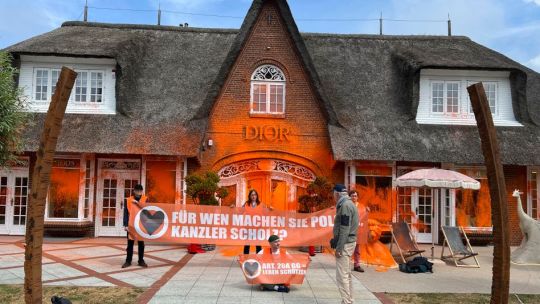
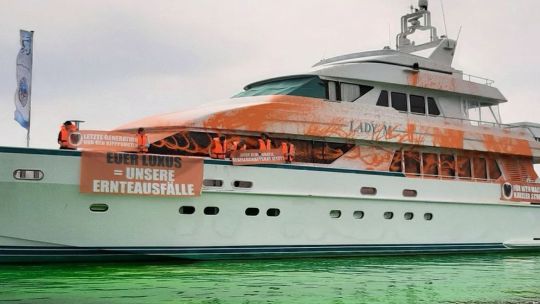
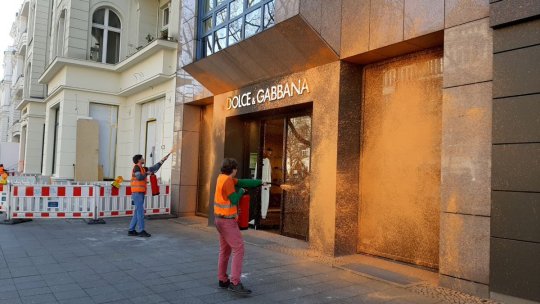
Anknüpfend an letztes Jahr schon Stop Oil:
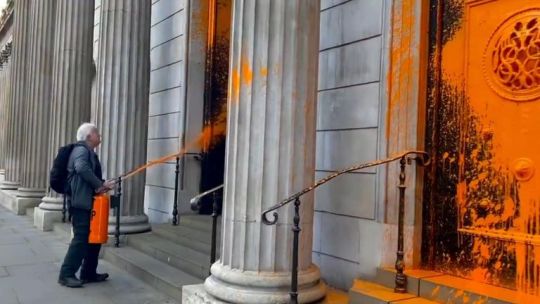
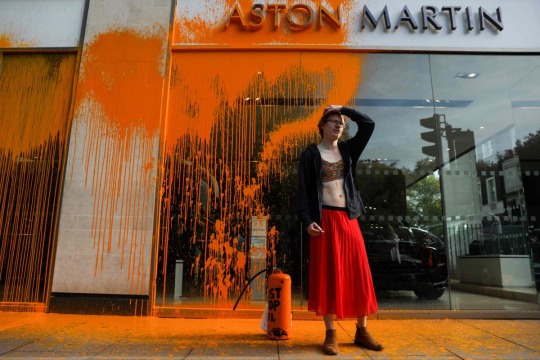
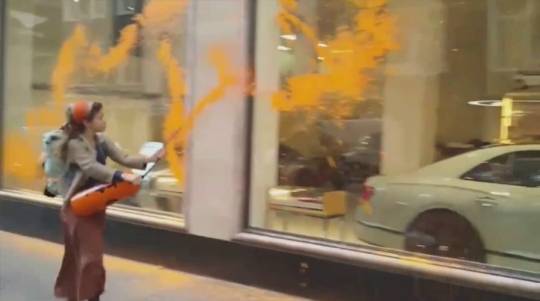
2019 Extinction Rebellion:

2021:
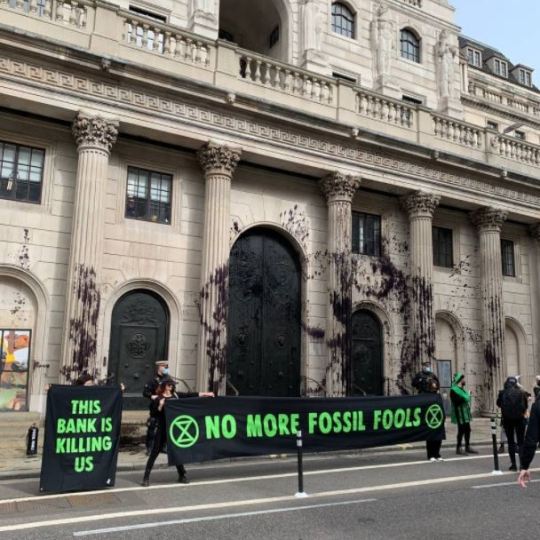
Parar o Gas in Portugal 2023:

Milano 2023:
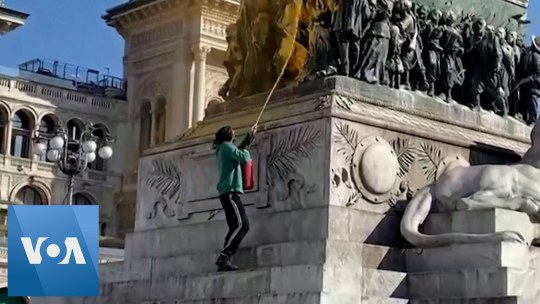
Neuseeland:

Berlin gegen Nazi-Klamottenläden 2012:
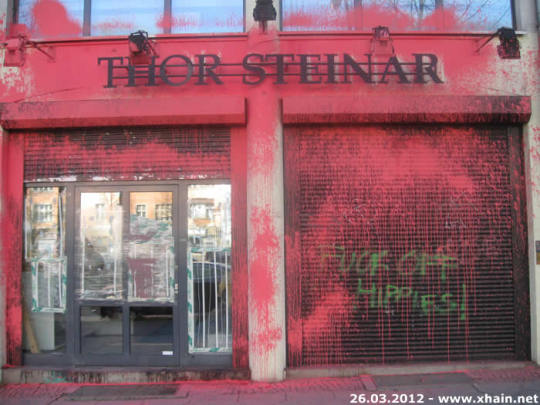
"Palestine Action" in NY 2021:
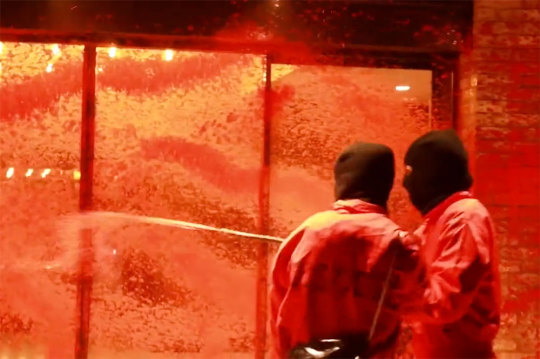
Burning Pink Party 2021:
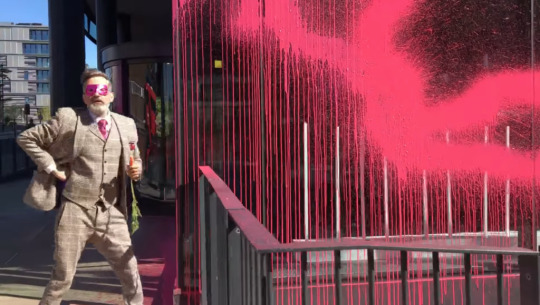
2019 Subvertisers Week of Action (screenshot):

2013 Italien Studierendenproteste:
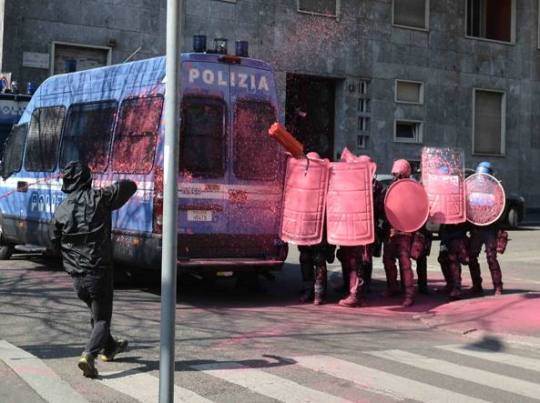
2015 Italien No Expo Proteste in Milano:
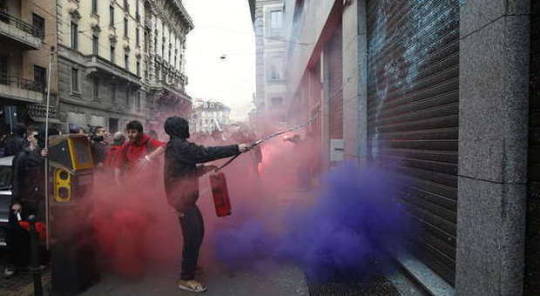
31 notes
·
View notes
Text
Albert Oehlen at the Marciano Art Foundation, Los Angeles
June 4, 2021
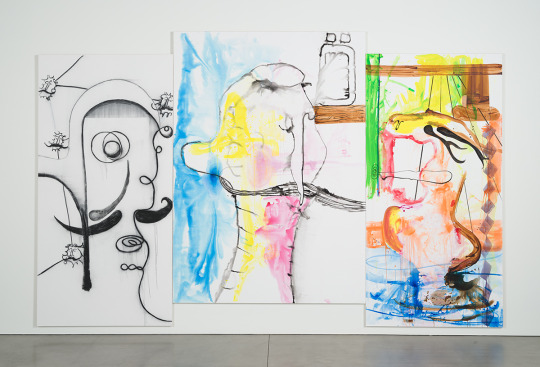
ALBERT OEHLEN Tramonto Spaventoso
June 10–August 7, 2021 Gagosian at the Marciano Art Foundation, 4357 Wilshire Boulevard, Los Angeles __________ Gagosian is pleased to present Albert Oehlen’s Tramonto Spaventoso (2019–20). This is the first time that Oehlen’s provocative and personal response to the Rothko Chapel in Houston is being exhibited in its entirety; the first part was shown at the Serpentine Galleries, London, in 2019–20, the second at Gagosian Beverly Hills earlier this year. The paintings are installed in a custom-built octagonal structure in the Grand Theater Gallery of the Marciano Art Foundation, reflecting the layout of the original chapel. Oehlen uses abstract, figurative, and collaged elements—often applying self-imposed strategic constraints—to disrupt the histories and conventions of modern painting. While championing self-consciously “bad” painting characterized by crude drawing and jarring coloration, he infuses expressive gesture with Surrealist attitude, openly disparaging the quest for reliable form and stable meaning. In the eight large-scale paintings that constitute the Tramonto Spaventoso project, Oehlen variously interprets and dramatically transforms John Graham’s Tramonto Spaventoso (Terrifying Sunset, 1940–49), a painting by the Russian-born American modernist that Oehlen discovered in the 1990s and has been fascinated with ever since.
In a startling act of creative homage, Oehlen interprets Graham’s puzzle-like image in myriad ways across multiple compositions. Using acrylic, spray paint, charcoal, and patterned fabric on canvas, he reworks various motifs from the original, including a mermaid and a man sporting a monocle and a Daliesque moustache. Combining graphic brushstrokes, deliberate “painterly” drips, and textural obfuscations, he tests the limits of coherence and legibility, challenging the viewer with unexpected aesthetic and thematic shifts. The work is illustrated in the catalogue recently published on the occasion of the Beverly Hills exhibition. Albert Oehlen was born in 1954 in Krefeld, Germany, and currently lives and works in Switzerland. Collections include the Broad, Los Angeles; Museum of Contemporary Art, Los Angeles; Art Institute of Chicago; Museum of Contemporary Art North Miami, FL; Cleveland Museum of Art; Museum of Modern Art, New York; Museo Jumex, Mexico City; Tate, London; Centre Pompidou, Paris; Museum Ludwig, Cologne, Germany; and Museum für Moderne Kunst, Frankfurt am Main, Germany. Exhibitions include Museo di Capodimonte, Naples, Italy (2009); Réalité Abstraite, Musée d’Art moderne de la Ville de Paris (2009); Terpentin, Kunstmuseum Bonn, Germany (2012); Malerei, Museum Moderner Kunst Stiftung Ludwig Wien, Vienna (2013); 55th Biennale di Venezia (2013); Die 5000 Finger von Dr. Ö, Museum Wiesbaden, Germany (2014); Home and Garden, New Museum, New York (2015); An Old Painting in Spirit, Kunsthalle Zürich (2015); Behind the Image, Guggenheim Bilbao, Spain (2017); Woods near Oehle, Cleveland Museum of Art (2018); TRANCE, Aïshti Foundation, Beirut (2018); Cows by the Water, Palazzo Grassi, Venice (2018–19); Unfertig, Lokremise Kunstmuseum St. Gallen, Switzerland (2019); and Serpentine Galleries, London (2019–20). _____ Albert Oehlen, never sleep again / at the steering wheel a man is a man / starter – turn me on, 2019, charcoal and acrylic on canvas, in 3 parts, overall: 145 7/8 × 245 7/8 inches (370.4 × 624.3 cm) © Albert Oehlen. Photo: Jeff McLane
35 notes
·
View notes
Text
Xenopsitta fejfari

By Scott Reid
Etymology: Strange Parrot
First Described By: Mlikovsky, 1998
Classification: Dinosauromorpha, Dinosauriformes, Dracohors, Dinosauria, Saurischia, Eusaurischia, Theropoda, Neotheropoda, Averostra, Tetanurae, Orionides, Avetheropoda, Coelurosauria, Tyrannoraptora, Maniraptoromorpha, Maniraptoriformes, Maniraptora, Pennaraptora, Paraves, Eumaniraptora, Averaptora, Avialae, Euavialae, Avebrevicauda, Pygostaylia, Ornithothoraces, Euornithes, Ornithuromorpha, Ornithurae, Neornithes, Neognathae, Neoaves, Inopinaves, Telluraves, Australaves, Eufalconimorphae, Psittacopasserae, Psittaciformes, Psittacoidea, Psittacidae, Psittacinae, Psittacinae
Status: Extinct
Time and Place: 22 million years ago, in the Aquitanian of the Miocene


Xenopsitta is known from the Merkur site of Cheb County in Czechia
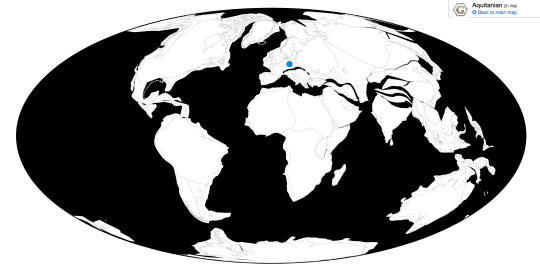
Physical Description: Xenopsitta was a small parrot, with very robust feet similar to living African parrots. Despite this, it was probably much smaller than most of them, probably only about half the size as living African Greys or Senegal Parrots. This would mean it is probably somewhere around 16 centimeters in total body length, though that is a rough estimate. Still, in a lot of ways it was a miniature version of a living African Grey Parrot, with similarly short ligaments and strong feet. Xenopsitta also had fairly stout and short wings compared to other parrots, though not to the point of being flightless. We can’t say much more about this parrot, as it has shapes in its feet and wings similar to quite a few different kinds of parrots, though African varieties seem most likely; it would have resembled living parrots in most ways too, with a similarly large head, big and distinctive beak, and possibly colorful feathers.
Diet: As a parrot, Xenopsitta would have been mainly herbivorous, feeding on a wide variety of nuts, leaves, and fruit; though they would have probably supplemented their diet with animal matter such as insects when needed.
Behavior: It is reasonable to suppose, as a bird closely related to a very specific group of living parrots, Xenopsitta would have been an intelligent forager much like they are today, using its large and curved beak to dig around and find food, as well as to make nests in cavities it would create in trees. It would have used its flexible feet to interact extensively with its environment, reaching out to grab things and to manipulate objects. In addition, Xenopsitta would have been very social, living in decently sized flocks and family groups, and talking to each other with squawks and calls aplenty. They would have taken care of their young, probably for a decent amount of time before the young left the nest.

By Ripley Cook
Ecosystem: Xenopsitta lived in a heavily forested environment, probably sub-tropical in terms of temperature with a bit of seasonal variation. There were many types of plants present in the area, including beeches and oaks, walnuts and birches, maples and chestnuts and mangos and mahoganies, citrus, magnolias, roses, and some coniferous trees. Little is known in the way of mammals here, but there were plenty of birds - including the Swift Procypseloides, the owl Mioglaux, the cormorant Phalacrocorax, the loon Petralca, ducks like Nettion and Mionetta, and the giant swimming-flamingo Palaelodus. The present of so many water birds indicates that there was a decent system of rivers and lakes present in the area as well. As for predators, Xenopsitta probably mostly had to watch out for Mioglaux!
Other: Xenopsitta is one of many fossil parrots known from the Miocene of Europe, a location that doesn’t have natural parrots today. This showcases that parrots occurred in a wide diversity in the forests of Europe prior to the Ice Age glaciations, with many different kinds of living groups represented within the sub-continent. Furthermore, it is one of the earlier ones known, which helps to clear up some of the murkiness of parrot evolution - stem-parrots disappear from the fossil record in the Oligocene, with modern-form parrots showing up seemingly out of nowhere in the Miocene. This is then followed by a dramatic extinction of parrots and other later tropical birds from Europe, sometime in the late Miocene, from which Xenopsitta and its descendants would have been affected.
~ By Meig Dickson
Sources under the Cut
Čerňanský, A., M. Venczel. 2011. An amphisbaenid reptile (Squamata, Amphisbaenidae) from the Lower Miocene of Northwest Bohemia (MN 3, Czech Republic). Neues Jahrbuch für Geologie und Paläontologie - Abhandlungen 260 (1): 73 - 77.
Göhlich, U. B. 2003. The avifauna of the Grund Beds (Middle Miocene, Early Badenian, northern Austria). Annalen des Naturhistorischen Museums in Wien Serie A 104:237-249.
Mayr, G., U. B. Göhlich. 2004. A new parrot from the Miocene of Germany with comments on the variation of hypotarsus morphology in some Psittaciformes. Belgium Journal of Soozology 134 (1): 47 - 54.
Mayr, G. 2010. Mousebirds (Coliiformes), parrots (Psittaciformes), and other small birds from the late Oligocene/early Miocene of the Mainz Basin, Germany. N. Jb. Geol. Paläont. Abh. 257 (2): 129 - 144.
Mayr, G. 2011. Two-phase extinction of “Southern Hemispheric” birds in the Cenozoic of Europe and hte origin of the Neotropic avifauna. Palaeobiology Palaeonevironment 91: 325 - 333.
Mayr, G. 2017. Avian Evolution: The Fossil Record of Birds and its Paleobiological Significance. Topics in Paleobiology, Wiley Blackwell. West Sussex.
Manegold, A. 2012. Two new parrot species (Psittaciformes) from the early Pliocene of Langebaanweg, South Africa, and their palaeoecological implications. Ibis 155 (1): 127 - 139.
Mlikovsky, Jiri (1998). "A new parrot (Aves: Psittacidae) from the early Miocene of the Czech Republic". Acta Soc. Zool. Bohem. 62: 335–341.
Pavia, M. 2014. The parrots (Aves: Psittaciformes) from the Middle Miocene of Sansan (Gers, Southern France). Paläontology Z. 88: 353 - 359.
Svec, P. 1981. Lower Miocene birds from Dolnice (Cheb basin), western Bohemia, part II. Casopis pro mineralogii 26(1):43-56
Waterhouse, D. M. 2013. Parrots in a nutshell: the fossil record of Psittaciformes (Aves). Historical Biology 18 (2): 227 - 238.
Xelenkov, N. V. 2016. The first fossil parrot (Aves, Psittaciformes) from Siberia and its implications for the historical biogeography of Psittaciformes. Biology Letters 12: 20160717.
#Xenopsitta fejfari#Xenopsitta#Parrot#Dinosaur#Bird#Birds#Prehistoric Life#Paleontology#Prehistory#Dinosaurs#Birblr#Palaeoblr#Factfile#Australavian#Neogene#Flying Friday#Herbivore#Eurasia#biology#a dinosaur a day#a-dinosaur-a-day#dinosaur of the day#dinosaur-of-the-day#science#nature
123 notes
·
View notes
Text
Het ontwerp van het nieuwe stadion van Club Brugge
Nu Club Brugge voor het eerst in ruim 13 jaar in de ontwerpfase is geraakt van zijn nieuw geplande stadion, beginnen supporters zich allerlei vragen te stellen hoe dit er precies zal uitzien. Maar eigenlijk kan je, als je alle beschikbare informatie hierover samenlegt met enkele persoonlijke bronnen en een gunstige informatiewind, al een heel goed beeld krijgen van hoe het stadion er moet uitzien.
Het telt 40 000 zitplaatsen, uiteraard volledig overdekt en gesloten in de hoeken, die worden verdeeld over 1 tribune zonder ring (noord), 1 VIP-tribune (west) en 2 tribunes met een ring (zuid en oost).
De noordtribune moet dus onze spionkop worden, naar analogie met de Gelben Wand van Borussia Dortmund. Deze zal 12 000 zitplaatsen tellen. Ter vergelijking: de huidige noord telt ‘maar’ zo’n 9000-tal zitplaatsen, verdeeld over twee ringen. Ondanks eerdere plannen van ons stadion bij de Blankenbergse Steenweg om het onderste deel van die spionkop uit 5000 staanplaatsen te laten beslaan, heeft men uiteindelijk ervoor gekozen voor allemaal zitplaatsen, zodoende bij Europese wedstrijden niet telkens te moeten verbouwen (volgens het staanplaatsensysteem van Bayern), 2500 plaatsen aan capaciteit te verliezen en dus ook extra organisatie om telkens 2500 mensen te laten verhuizen naar andere tribunes. Het is wel de bedoeling dat rechtstaan de norm wordt en ondanks de zitplaatsen in praktijk dus de noord als staantribune zal fungeren. Wie daar toch wil zitten, zal weinig bal en veel rug zien.
De westtribune wordt en blijft dus onze eretribune. Het VIP-gedeelte voor 5000 personen zal hier volledig in ondergebracht worden. Meestal is de regel dat 10% van de totale capaciteit naar het VIP-gebeuren gaat, bij Club zijn ze echter vol vertrouwen dat ze deze duurdere plaatsen aan 12,5% van ons publiek kunnen verkopen. Het grootste deel van die 5000 VIPS zal dus plaatsnemen in 4000 comfortabele zeteltjes, maar de allerrijkste 1000 kunnen uiteraard ook beroep doen op één van de 30 skyboxen/loges. Uiteraard zullen hier ook verschillende restaurants ondergebracht worden, samen goed voor 2000 plaatsen. Afhankelijk van vraag en wedstrijduur, kan Club bij introductie van een eetshift zowel voor als na de wedstrijd zo samen tot maximum 4000 VIP-eters hun maag vullen. Ook de pers zal vanuit deze tribune verslag uitbrengen en uiteraard zullen ook de kleedkamers zich hierin bevinden. Onderaan de westtribune zullen zich overigens ook nog 1500 gewone zitplaatsen bevinden, net als de dugouts voor invallers en technische staf op zijn Engels in de westtribune zal verwerkt worden.
De zuidtribune zal net als de noordtribune 12 000 zitplaatsen tellen (ook hier dus zo’n 3000-tal extra plaatsen t.o.v. de huidige zuid), maar die wordt dus wel opgedeeld door een ring. 2000 van die zitplaatsen worden gereserveerd voor supporters van de bezoekende ploeg. 5% is immers het verplichte minimum van de totale capaciteit die je als ploeg moet voorzien voor de uitploeg. Aangezien heel wat van de kleinere ploegen echter maar enkele honderden supporters meebrengen, zou er dàn wel de mogelijkheid zijn om één van de twee vakken van het uitvak voor thuissupporters open te stellen, indien de vraag hiervoor groter is dan het reeds beschikbare aanbod van 38 000 zitplaatsen voor de thuissupporters. Het uitvak zal zich in de hoek tussen west en zuid liggen en dus niet langer zoals nu tussen zuid en oost. De rest van de zuidtribune, 10 000 zitplaatsen, zal net zoals nu als familietribune gepromoot worden. In de wandelgangen van de zuid zal hierop dan ook uitdrukkelijk ingespeeld worden om jonge gezinnen ook buiten de 90 minuten wedstrijd een programma aan te bieden dat hen kan plezieren …
De onderverdeling van ringen van de zuidtribune worden doorgetrokken naar de oosttribune, wiens capaciteit van zo’n 7000 zitplaatsen naar 9500 zitplaatsen zal stijgen. Het is de bedoeling dat, net zoals nu, ook onderaan de oost supporters zich rechtstaand zullen mogen uitleven.
Als geheel valt op dat de tribunes zich dicht bij het veld bevinden, geen gracht dus, en vrij steil omhoog gaan. De onderste ringen zullen ook veel meer rijen tellen dan nu het geval is, de bovenste ringen zullen relatief klein zijn in verhouding met de onderste ring. Een beetje naar analogie met het Allianz Stadium van Juventus Turijn, dat het Club-bestuur overigens eind november 2014 heeft bezocht tijdens zijn Europese verplaatsing bij FC Torino. De reden hiervoor is dat Club Brugge de mogelijkheid wil hebben om snel, in een tijdspanne van een tussenseizoen, en zonder zware ingrijpende maatregelen (lees: zonder het moeten demonteren van het dak) de capaciteit uit te kunnen breiden indien de vraag (als er wachtlijsten zouden moeten aangelegd worden voor abonnementhouders) het aanbod zou overtreffen (bij Juventus kan men zo nog 15 000 plaatsen extra creëren). Daarom zal er, naast de extra funderingen hiervoor, ook achter de hoogste, laatste rij stoeltjes al de nodige ruimte gelaten worden om indien ooit nodig op te vullen met extra zitplaatsen. Om u een idee te geven: een extra rij stoeltjes in de nok en volledig rond van een 40 000 zitplaatsentellend stadion levert al gemakkelijk zo’n 1200 zitplaatsen extra op. Als men dus een gangpad achter de laatste rij voor 8 rijen breed vrijlaat, kan men dus snel en simpel de capaciteit verhogen naar 50 000 zitplaatsen. Uiteraard zal die uitbreiding van extra capaciteit dan wel opnieuw vergund moeten worden, met een passend mobiliteitsplan …
Achter dat gangpad en dus enkele meters hoger dan de laatste rij stoeltjes neemt men ook het idee mee dat men al bij de Blankenbergse Steenweg had: een boulevard rondom het volledige stadion met drank- en eetstanden, zo ingericht dat je het zicht op het veld kan bewaren wanneer je staat aan te schuiven. De catering komt volledig in Club-beheer, de winsten worden dan dus niet langer afgeroomd door de Verkinderes van deze wereld.
Naast dit alles zal er, zoals al langer geweten is, in het stadion ook een nieuwe Club-shop en een Club-museum ondergebracht worden en zal er in/aan de noord een fandorp/supportersplein voorzien worden om vooraf en hopelijk ook veel na de wedstrijd feestjes te houden.
Het budget met zo’n 100 miljoen euro is relatief beperkt voor zo’n project. In de eerste plaats wordt dit dus dan ook ingezet naar functionaliteit en klantvriendelijkheid. Liever de centen investeren in voldoende sanitair en drank- en eetstandjen dan oppervlakkige prestige langs de buitenkant. Wat dat betreft moeten de 3 overgebleven consortia die nu nog in de running zijn, zich van hun beste creatieve kant tonen. De eisen wat de buitenkant betreft van Club zijn dan ook vrij beperkt: een rechthoekig dak en een gevel die past in de nieuw aan te leggen parkomgeving van woonwijk Sint-Andries. Verwacht dus geen spiegelpaleis zoals de Ghelamco Arena noch de onafgewerkte industriële look, maar veeleer een middeleeuwse stijl, hierbij wat verwijzend naar de prachtige Brugse binnenstad.
Door de coronacrisis is er een maand vertraging opgelopen bij de architectenbureaus, maar het is de bedoeling dat eind juli de omgevingsaanvraag kan ingediend worden. Tenzij het M.E.R., dat toegevoegd dient te worden bij de aanvraag, zo zware bepalingen oplegt qua bereikbaarheid dat het niet meer interessant wordt voor Club om op de Olympiasite een nieuw stadion te creëren en in extremis Club de stekker er zelf nog zou uittrekken. Dan moeten al deze plannen weer bijgewerkt worden voor een nieuwe locatie … Niemand twijfelt aan het potentieel van Club, in een nieuw en modern stadion kan het volgens sporteconomen gemakkelijk ergens tussen de 30 à 35 000 abonnementen verkopen, maar dan mag het natuurlijk wel geen martelgang worden om daar te geraken en te parkeren.
Maar we mogen er toch van uitgaan dat Club die denkoefening al heeft gedaan voor het aan dit avontuur begon op niet meteen de meest geschikte locatie, in een woonwijk en ver van autostrades, vaak verfoeid door Club zelf. Een locatie haast onbewust en per ongeluk aangeboden door Cercle zowaar, maar wel één die sowieso het snelste duidelijkheid zal brengen in een stadionsoap die nu al bijna 13,5 jaar duurt. Het is niet dat we over een jaar nog niet zullen weten waaraan we toe zijn op deze locatie.
Aangezien bij indiening de plannen voor iedereen dan officieel raadpleegbaar en dus zichtbaar zullen zijn, zal kort voor de indiening van zijn omgevingsaanvraag Club met een persconferentie naar buiten moeten komen, met zijn plannen verpakt als heuse primeur. En dan wordt alles wat hier in woord staat visueel gemaakt voor u! Met hopelijk in december de vergunning als kerstcadeau op zak, kunnen we dan in het voorjaar van 2021 effectief beginnen aan het bouwproces en is er met Pasen een stadion aan het verrijzen.
Uw Club-dienaar,
Giorgio Marchetti.
2 notes
·
View notes
Text
DIE WIEDERHOLUNG
Wie gehdsn so? (Wie geht es ihnen?)(Die sächsische Sprache) DIE DEUTSCHE STUNDE FOLKLORE TÄNZE AUS ALLER WELT: Die traditionelle Tracht in Grönland 1.A https://www.google.com.ar/search?q=traditionelle+Tracht+aus++groenland&rlz=1C1CHBF_esAR807AR807&tbm=isch&tbo=u&source=univ&sa=X&ved=2ahUKEwjg6Mfmw6zdAhXIFJAKHcl1C4QQsAR6BAgBEAE&biw=1280&bih=918 1.B https://blog.zeitraeume-reisen.de/2015/03/groenlands-kultur-und-seine-menschen-tradition-und-moderne/ 2- Kinder aus Schleching/ Chiemgau/ Bayern tanzen und singen "Bauernmadl" https://youtu.be/j8O_Duk-vIM vía @YouTube ---------------------------------------------- DIE OPER Arnold Schoenberg Moses und Aron https://youtu.be/NKm_cdlodLQ vía @YouTube DER SÄNGER: ARNOLD SCHÖNBERG ( 1874-1951) Gurrelieder https://youtu.be/9O6dvqXsaEM vía @YouTube Melanie Diener - soprano, Iris Vermillion - mezzo soprano, Thomas Moser - tenor, Philip Langridge - tenor, Ralf Lukas - baritone, Werner Hollweg - speaker. WDR Rundfunkchor Köln/ NDR Choir/ Czech Philharmonic Choir/ Beethoven Orchestra, Bonn/ Roman Kofman. DIE BIOGRAPHIE: Gurre-Lieder ist eine massive Kantate für fünf Gesangssolisten, Sprecher, Chor und großes Orchester, komponiert von Arnold Schönberg , nach Gedichten von der dänischen Romancier Jens Peter Jacobsen (aus dem Dänischen ins Deutsche übersetzt von Robert Franz Arnold). Der Titel bedeutet Songs von Gurre, die sich auf Gurre Schloss in Dänemark, Szene des mittelalterlichen Liebestragödie (bezogen in Jacobsens Gedichte) rund um die dänische nationale Legende von der Liebe des dänischen Königs Valdemar Atterdag(Valdemar IV, 1320-1375, Waldemar von Schönberg geschrieben) für seine Geliebte Tove, und ihre anschließende Ermordung von Waldemars neidisch Königin Helvig (eine Legende , die historisch ist wahrscheinlich mit seinem Vorfahren verbunden Valdemar I ). Zusammensetzung Im Jahr 1900 begann Schönberg das Werk als Komponieren Liederzyklus für Sopran , Tenor und Klavier für einen Wettbewerb des Wiener Tonkünstler-Verein (Wien Komponistenbund) ausgeführt werden . Es wurde in einem üppigen, spätromantischen Stil stark beeinflusst durch schriftliche Richard Wagner . Nach Schönberg, aber er "fertig ihnen eine halbe Woche zu spät für den Wettbewerb, und dies über das Schicksal der Arbeit entschieden." [1] Später in diesem Jahr er seine ursprüngliche Konzeption radikal erweitert, Verbindungen zwischen den ersten neun Songs komponieren sowie ein Vorspiel Hinzufügen der Waldtaube Lied, und das ganze Teile zwei und drei. Er arbeitete an dieser Version sporadisch , bis um 1903, als er die Mammutaufgabe aufgegeben , die Arbeit von zu orchestrieren und wechselte zu anderen Projekten. Als er auf das Stück im Jahr 1910 zurückkehrte, hatte er bereits seine erste anerkannte geschrieben atonal Werke, wie dieDrei Stücke für Klavier , Op. 11, Fünf Stücke für Orchester , Op. 16 und Erwartung , Op.17. Er hatte auch in den Bann kommen Gustav Mahler , den er im Jahre 1903 und deren Einfluss kann sein , erkennbar in der Orchestrierung der letzteren Teile der Gurre-Lieder kennengelernt hatte. Während Teile eins und zwei in der Konzeption und Ausführung deutlich Wagnerianer sind, bietet Teil drei die abgespeckte Orchestertexturen und kaleidoskopischen Verschiebungen zwischen kleinen Gruppen von Mahler favorisierten Instrumente in seinen späteren Sinfonien. In Des Sommerwindes wilde Jagd, Schönberg führte auch die erste Verwendung von Sprechgesang (oder Sprechstimme), eine Technik würde er ausführlicher in erkunden Pierrot Lunaire von 1912. [2] Die Orchestrierung wurde schließlich im November abgeschlossen 1911. [3] Premieren Franz Schreker dirigierte die Uraufführung des Werkes in Wien am 23. Februar 1913. Zu diesem Zeitpunkt war Schönberg mit dem Stil und Charakter des Stückes entzaubert und war sogar abweisend seiner positiven Empfang und sagte : "Ich war ziemlich gleichgültig, wenn nicht sogar ein wenig verärgert. sah ich, dass dieser Erfolg keinen Einfluss auf das Schicksal meiner späteren Arbeiten haben würde. ich hatte während dieser 13 Jahre entwickelte sich mein Stil in einer solchen Weise, dass in keinem Verhältnis zu tragen zu dem gewöhnlichen Konzertbesucher würde es scheinen, . alle vorhergehenden Musik hatte ich für jede neue Arbeit zu kämpfen, und ich hatte in der wildesten Art und Weise durch die Kritik beleidigt, ich Freunde verloren hatte, und ich in dem Urteil von Freunden jeden Glauben völlig verloren hatte, und ich stand allein gegen eine Welt von. Feinde ". [4] Bei der Premiere, Schönberg , die Mitglieder des Publikums, von denen viele waren heftige Kritik an seinem , die neu von der Arbeit wurden gewonnen Gesicht nicht einmal; Stattdessen beugte er den Musikern, aber immer mit dem Rücken zur jubelnde Menge geworden. Violinist Francis Aranyi nannte es "das seltsamste Sache , dass ein Mann , der vor dieser Art von hysterischer hat anbeteten mob jemals getan." [5] Es wäre falsch , anzunehmen , dass Schönberg Gurre-Lieder mit einer Zusammensetzung von keinem Verdienst betrachtet, jedoch. Ein paar Monate nach der Premiere er schrieb Wassily Kandinsky , "Ich sehe mit Sicherheit nicht auf diese Arbeit ab, wie die Journalisten immer annehmen. Denn obwohl ich sicherlich seit jenen Tagen sehr viel entwickelt habe, habe ich nicht verbessert, aber mein Stil hat einfach besser geworden ... ich halte es für wichtig , dass die Menschen Glauben an die Elemente in dieser Arbeit geben , die ich später zurückgehalten. " [6] Schönbergs Meister und ehemaliger Schüler, der BBC Programmplaner Edward Clark , lud den Komponisten nach London die erste britische Performance am 27. Januar 1928 durchzuführen [7] [8] Clark versucht hatte , im vergangenen Jahr die Premiere zu haben, am 14. April 1927, aber diese Pläne fiel durch. [9] Leopold Stokowski leitete die amerikanische Premiere am 8. April 1932 mit dem Philadelphia Orchestra , Solisten und Chor. Erste Aufnahme Stokowski Aufführungen am 9. April und 11. 1932 wurden aufgezeichnet "live" von RCA (siehe unten). Das Unternehmen gab den 11. April Performance auf siebenundzwanzig 78er Seiten, und dies blieb die einzige Aufnahme der Arbeiten im Katalog bis zum Aufkommen der LP; es wurde auf LP und CD schließlich neu aufgelegt. Bell Laboratories hatte in dem Philadelphia Orchestra experimentell Aufnahme High Fidelity und Stereo - Ton ; RCA verwendet , um die neue Technologie die Leistung auf 33 1/3 Umdrehungen pro Minute Meister aufzunehmen. [ Bearbeiten ] Andere Aufführungen Eine Leistung von Gurre-Lieder ohne Unterbrechung läuft über eine Stunde und eine Hälfte. Riccardo Chailly von 1990Decca - Aufnahme, zum Beispiel, dauert mehr als 100 Minuten und bringt zwei Compact Discs. [10] Im Jahr 2014 dieniederländische National Opera in Amsterdam war das erste Unternehmen , das Gurre-Lieder auf die Bühne, in einer Produktion der Regie von Pierre Audi . [11] Struktur Die Kantate ist in drei Teile gegliedert. Während die ersten beiden Teile nur für Solostimmen und Orchester erzielt werden, stellt der dritte Teil zwei weitere Solisten, einen Erzähler, drei Vierteil sowie ein komplettes gemischten Chor Männerchöre. Im ersten Teil der Arbeit, die Liebe von Waldemar Tove und das Thema des Unglücks und bevorstehenden Tod sind in neun Lieder für Sopran und Tenor mit Orchesterbegleitung erzählt. Eine lange Orchesterzwischenspiel führt zumWaldtaube Lied , das von Tove Tod und Waldemar Trauer erzählt. Das kurze zweite Teil besteht aus nur einem Lied, in dem die beraubte und verstört Waldemar Gott der Grausamkeit beschuldigt. Im dritten Teil, ruft Waldemar seinen toten Vasallen aus ihren Gräbern. Die Untoten unruhig Roaming und wilde Jagd rund um die Burg in der Nacht durch den Männerchor donnernd dargestellt, bis die Horde, durch den Glanz des Sonnenaufgangs getrieben, tritt zurück zurück in den Schlaf des Todes. Währenddessen singt ein Bauer von seiner Angst vor dem unheimlichen Armee und es ist eine humorvolle Zwischenspiel in der grotesken Lied des Narren Klaus, der mit dem makabren Wirt zu reiten gezwungen wird, wenn er nicht in seinem Grab ruhen würde. Eine sanfte Orchesterzwischenspiel das Licht der Morgendämmerung führt in das Melodram The Summer Wind Wild Hunt, eine Erzählung über den Morgenwind darstellt, die in den gemischten Chor-Abschluss fließt Seht Sonne sterben! ( "See the Sun!"). Erster Teil Orchestervorspiel Nun dampft sterben Dämm'rung (Tenor = Waldemar) O, WENN des Mondes Strahlen- (Sopran = Tove) Ross! Mein Ross! (Waldemar) Sterne jubeln (Tove) So tanzen sterben Engel vor Gottes Thron nicht (Waldemar) Nun sag ich dir zum Ersten Mal (Tove) Es Ist Mitternachtszeit (Waldemar) Du sendest mir einen Liebesblick (Tove) Du wunderliche Tove! (Waldemar) Orchestral Interlude Tauben von Gurre! (Mezzosopran = Waldtaube) Zweiter Teil [ Bearbeiten ] Herrgott, weißt du, was du tatest (Waldemar) Teil drei [ Bearbeiten ] Erwacht, König Waldemars Mannen wert! (Waldemar) Deckel des Sarges klappert (Bass-Bariton = Bauer, Männerchor) Gegrüsst, o König (Männerchor = Waldemar Männer) Mit Toves Stimme flüstert der Wald (Waldemar) Ein seltsamer Vogel ist so'n Aal (Klaus die Jester) Du Strenger Richter droben (Waldemar) Der Hahn Erhebt den Kopf zur kräht (Männerchor) Des Sommerwindes wilde Jagd / Die wilde Jagd Summer Wind Orchestervorspiel Herr Gänsefuß, Frau Gänsekraut (Lautsprecher) Seht die Sonne! (Gemischter Chor) Besetzung [ Bearbeiten ] Gurre-Lieder für ein ungewöhnlich großes Ensemble hat aus den folgenden Kräfte (ca. 150 Instrumentalisten und 200 Sänger): Holzbläser 4 Piccolos (Verdoppelung Fl. 5-8) 4 Flöten 3 Oboen 2 Englisch Hörner (Verdoppelung Ob. 4, 5) 3 Klarinetten in B-Dur, A 2 Klarinetten in Es Dur (Verdoppelung A Kl. 4, 5) 2 Baßklarinetten (Verdoppelung A Kl. 6, 7) 3 Fagotte 2 Kontra Messing 10 Horns (Hns. 7-10 Verdoppelung Wagnertuben in B-Dur und F) 6 Trompeten in F, B-flat & C Bass Trompete in Es -Dur Altposaune 4 Tenorposaunen Bassposaune Kontrabassposaune Tuba Schlagzeug 6 Timpani Tenor Trommel Kleine Trommel Schlagzeug Cymbals Dreieck Ratsche GroßeEisenketten TamTam Glockenspiel Xylophon Keyboards Celesta ------------------------------------------------------------ DIE GEDICHTE:Jens Peter Jacobsen (1847 - 1885) 1-So stockte auch da So stockte auch da jenes Blutes Strom, Das einst gewohnt war zu rinnen, So bebten auch die Nerven zur Ruh, Und Nacht ward's alle den Sinnen. Und Herz und Hirn müssen stille sein: Bist Staub und lebloser Ton allein. Ach Ewigkeit-Sehnsucht, du wundersame! Da ist nur Staub, eine Tat und ein Name. Denn jeder gute Gedanke Stirbt nimmermehr so lang, Bis nicht aus seinem Keime Ein beßrer noch entsprang. Licht übers Land Licht übers Land, – Das ist's, was wir wollen. 2-Namenlos Eines Abends denk' ich vor allen, Denke seiner genau, wehmütig-stolz Und in jubelnder Demut – Stille war's im Gemach, Singendes Schweigen; Der Schein der Lampe fiel so klar und mild Über die feinen schönen Züge; Und ich sah �� doch nicht, daß das Licht Über die feinen, schönen Züge fiel – Nein! es war, als wiegte meine Seele In schaffender Macht das Antlitz Hervor aus des Lichtes schauerndem Strom. Und die Augen sahen auf mich so sehnsuchtsmilde, Daß mein Gedanke in seltsamem Mute raunte, Ich sei wert zu besitzen ... Dann traten die Züge in den Schatten. Kein Wort ward gesprochen, Worte waren zu schwer für meine Gedanken; Und kein Handdruck gewechselt, Denn ich wußte mir nicht, daß ich da war. Und doch weiß ich, wir zwei, wir gehören zusammen, Daß nichts uns jemals scheiden kann, War jene Sekunde auch unsere letzte Begegnung. 3-Und ward dem Tag Und ward dem Tag all seine Qual Und weint' er sie aus in Tau, So öffnet die Nacht den Himmelssaal Mit ewiger Sehnsucht stummer Qual, Und eins und eins Und zwei und zwei Zieht ferner Welten Genienchor Aus dunkler Himmelstiefe vor, Und hoch ob der Erde Freuden und Schmerzen, In Händen hoch die Sternenkerzen, Schreiten sie langsam den Himmel dahin Und wie sie gehen, Den Sinn voll Trauer, Seltsamlich wehen In des Raumes eisigem Schauer Der Sternenkerzen flackernde Flammen. 4-Traum Bleib, o bleib in deiner Träume Welt, Such nicht des Lebens wirkliches Sein! Es hat nur dunkle oder grelle Farben, Der Traum nur hat der Morgensonne Schein; Stirbst du lebend, bist du tot noch des Lebens, Kehren wird dein Geist zu der Erde zurück; Stirbst du als Träumer, kannst du ruhig sterben, Mit dir verbleicht auch dein ewiges Glück. 5-Was narrt mich immer das Leben! Was narrt mich immer das Leben, Sobald ich mich vorwärts richte, Wenn müde ich bin zu verweilen Im lustigen Heim der Gesichte? Bin ich denn ein Fremder hier unten Nicht für die Erde geboren, Hat auf dem Weg zu den Sternen Ein Engel hier mich verloren? Nein! Nein, ich fühle hier drinnen: Der Erde gehöre ich, Das glühende Leben hier unten Ist grade ein Leben für mich; Und alle Gaben des Lebens Umfass ich in meiner Brust, Sowohl den bittersten Schmerz, Wie auch die herrlichste Lust. O! hätte ich Macht wie Willen Und Willen dazu wie Lust, Untergehn würde die Welt Bei Flammen in meiner Brust! ---------------------------------------------------------- 1 HÖRBUCH UND 1 HÖRSPIEL 1 HÖRBUCH Sagen und Legenden aus Niedersachsen „Die Eule zu Peine" https://youtu.be/TUjYezC6Lho vía @YouTube 1 HÖRSPIEL Einstein Vision - das Universum und die Zeit (Doku Hörspiel) https://youtu.be/3BU04n3AQlM vía @YouTube ------------------------------------------------------------- 1 BIOGRAPHIE: ROBERTTO ARLT Roberto Arlt Roberto Arlt Geboren 2. April 1900 Buenos Aires , Argentinien Gestorben 26. Juli 1942 ( im Alter von 42) Buenos Aires , Argentinien Ruheplatz Asche verstreut in Paraná-Fluss Beruf Romancier, Dramatiker und Journalist Sprache Spanisch Staatsangehörigkeit Argentinien Fach argentinische Literatur Ehepartner Carmen Antinucci (starb 1940); Elizabeth Glanz Kinder Mirta Electra, Roberto Roberto Arlt (1900-1942) war ein argentinischer Schriftsteller. Biographie Er war Roberto Godofredo Christoph Arlt in geboren Buenos Aires am 2. April 1900. Seine Eltern waren beide Einwanderer: sein Vater Karl Arlt war ein preußischer aus Posen (heute Posen im heutigen Polen) und seine Mutter war Ekatherine Iobstraibitzer, gebürtig aus Triest und italienischsprachigen. Deutsch war die Sprache häufig in ihrem Haus verwendet. Seine Beziehung zu seinem Vater war stressig, wie Karl Arlt eine sehr schwere und strenger Mann war, von Arlt eigene Rechnung. Die Erinnerung an seine bedrückende Vater würde in mehreren seiner Schriften erscheinen. Zum Beispiel Remo Erdosain (ein Zeichen zumindest teilweise basierend auf Arlt das eigene Leben) oft erinnert sich an seine gewalttätigen Vater und wie wenig oder gar keine Unterstützung, die er würde ihm geben. Nach dem von der Schule von acht im Alter vertrieben wird, wurde Arlt Autodidakt und arbeitete an allen möglichen verschiedenen Gelegenheitsjobs bevor er einen Job landen bei einer lokalen Zeitung auf: als Angestellter in einer Buchhandlung, Lehrling bei einem Klempner, Maler, Mechaniker, Schweißer , Manager in einer Ziegelfabrik und Hafenarbeiter. Sein erster Roman, El juguete rabioso (1926) ( " Mad Toy "), war die halbautobiografische Geschichte von Silvio, ein Aussteiger, der durch eine Reihe von Abenteuern geht versuchen , zu sein "jemand." Berichtet von Silvio älteren Selbst, spiegelt der Roman die Energie und das Chaos des frühen 20. Jahrhunderts in Buenos Aires. Die Erzählers literarisch und manchmal poetische Sprache steht in scharfem Kontrast mit dem Straßenniveau Slang von Mad Toy 's vielen bunten Zeichen. Arlt zweiter Roman, die beliebten Los siete locos (Die sieben Irren) war rau, brutal, Umgangs- und surreal, ein vollständiger Bruch mit der höflichen, bürgerliche Literatur typischer argentinischer Literatur. Los lanzallamas (Die Flammenwerfern) war der Fortsetzung, und diese beiden Romane zusammen von vielen gedacht werden, sein größtes Werk zu sein. Was folgte, waren eine Reihe von Kurzgeschichten und Theaterstücke, in denen Arlt seine Vision von bizarren, halb verrückt, entfremdeten Zeichen verfolgt verrückt Aufgaben in einer Landschaft des städtischen Chaos zu verfolgen. Im Jahr 1932 veröffentlichte er El amor brujo . Im Laufe seines Lebens wurde jedoch Arlt am besten bekannt für seine "Aguafuertes" ( "Radierungen"), das Ergebnis seiner Beiträge als Kolumnist - zwischen 1928 und 1942 - zum Buenos Aires Tageszeitung " El Mundo ". Arlt verwendet, um diese Spalten zu kommentieren, in seiner charakteristisch unverblümt und unprätentiösen Stil, auf die Besonderheiten, Heucheleien, Fremdheit und Schönheit des täglichen Lebens in der argentinischen Hauptstadt. Diese Artikel enthalten gelegentliche Exposés der öffentlichen Institutionen, wie zum Beispiel der Jugendgerichtsbarkeit ( "Escuela Primaria de delincuencia", 26-29 September 1932) oder das öffentliche Gesundheitssystem. Einige der "Aguafuertes" wurden in zwei Bänden unter dem Titel Secretos femeninos gesammelt. Aguafuertes inéditas und Tratado de delincuencia. Aguafuertes inéditas , die von bearbeitet wurden Sergio Olguín und veröffentlicht von Ediciones 12 und Página / 12 im Jahr 1996. Zwischen März und Mai 1930 schrieb Arlt eine Reihe von "Aguafuertes" als Korrespondent zu "El Mundo" in Rio de Janeiro. Im Jahr 1935 verbrachte er fast ein Jahr lang zu schreiben, wie er in ganz Spanien und Nordafrika, am Vorabend des spanischen Bürgerkrieges reiste. Zum Zeitpunkt seines Todes hatte gehofft, Arlt als Korrespondent in die USA geschickt werden. Verschlissene und erschöpft nach einem Leben voller Entbehrungen, er starb an einem Schlaganfall am 26. Juli 1942. Sein Sarg aus seiner Wohnung von einem betriebenen Kran abgesenkt wurde, eine ironische Ende, wenn man bedenkt seine skurrilen Geschichten. Arlt hat auf der lateinamerikanischen Literatur massiv einflussreich gewesen, darunter den 1960er Jahren "Boom" Generation von Autoren wie Gabriel García Márquez. "Sagen wir, bescheiden, dass Arlt Jesus Christus ist" , propounded Roberto Bolaño . [1] Analogen in der englischen Literatur sind diejenigen , die literarischen "Ehrbarkeit" vermeiden , indem sie sich über die schlechte Schreiben, die Verbrecher und die mad: Schriftsteller wie William Burroughs , Eisberg Schlank und Irvine Welsh . Arlt, datierte jedoch alle. Er ist weithin als einer der Gründer des modernen argentinischen Romans betrachtet; unter den zeitgenössischen Autoren , die von Arlt beeinflusst worden zu sein Anspruch sind Abelardo Castillo , Ricardo Piglia und César Aira . Mindestens zwei argentinische Filme wurden auf der Grundlage seiner Romane, Los siete locos (1974) und El juguete rabioso (1985). Referenzen Jump up ^ "Die sieben Irren" . New York Review Books. Abgerufen 2015.12.16. Aynesworth, Michele Mckay . Mad Spielzeug, Übersetzung von Roberto Arlt El juguete rabioso, mit Einleitung und Anmerkungen. Duke UP, 2002. ISBN 0-8223-2940-9 . Romane El diario de un morfinómano (1920) (Tagebuch eines Morphimaniac) El juguete rabioso (1926) (Mad Spielzeug) Los siete locos (1929) (Seven Madmen) Los lanzallamas (1931) (Die Flammenwerfern) El amor brujo (1932) (Bezaubernde Liebe) Spielt El humillado (1930) 22222 millones (1932) Prueba de amor (1932) Escenas de un grotesco (1934) Saverio el Cruel (1936) El fabric de fantasmas (1936) La isla desierta (1937) Separación feroz (1938) África (1938) La fiesta del hierro (1940) El Desierto entra a la ciudad (1952) (posthum) La cabeza del separada tronco (1964) (posthum) El amor brujo (1971) (posthum) Sammlungen von Kurzgeschichten [ Bearbeiten ] El jorobadito (1933) (Der kleine Glöckner) El criador de Gorilas (1941) (Der Gorilla Handler) Journalistik Aguafuertes Porteñas (1933) (Radierungen von Buenos Aires) Aguafuertes españolas (1936) (Radierungen aus Spanien) Nuevas aguafuertes españolas (1960) (New Radierungen aus Spanien) Secretos femeninos. Aguafuertes inéditas (1996) (Female Secrets. Nicht veröffentlichte Radierungen) Tratado de delincuencia. Aguafuertes inéditas (1996) (Treatise on Delinquenz. Nicht veröffentlichte Radierungen) Externe Links Wikimedia Common hat die Mittel im Zusammenhang mit Roberto Arlt . Spanisch Wikisource hat Originaltext mit diesem Artikel: Roberto Arlt Ein Gemälde von einem Mann auf einer Leiter in einem großen Bücherregal stehen Wikilivres hat Original-Medien oder Text zu diesem Artikel: Roberto Arlt Biographie von Roberto Arlt bei Biblioteca Virtuelle Miguel de Cervantes (Spanisch) Roberto Arlt bei suchen Grave ROBERTO ARLT UND ALFRED DÖBLIN MODERNE IN DEN METROPOLEN https://books.google.de/books?id=Q8GEwL2gxm8C&pg=PA5&hl=de&source=gbs_selected_pages&cad=2#v=onepage&q&f=false ------------------------------------------------------------------------------------------------------------------------------------------------------------------------------------------- 2 REZEPTE: 1- Rezept - Wirsing-Hack-Rouladen (Red Kitchen - Folge 161) https://youtu.be/npjlAg_ZL-s vía @YouTube 2- Cabanossi - Eintopf mit Bauchspeck und Kidney Bohnen Schritt-für-Schritt Anleitung: http://www.esterkocht.com/cabanossi-sausage-pork-belly-and-bean-stew/
3 notes
·
View notes
Photo
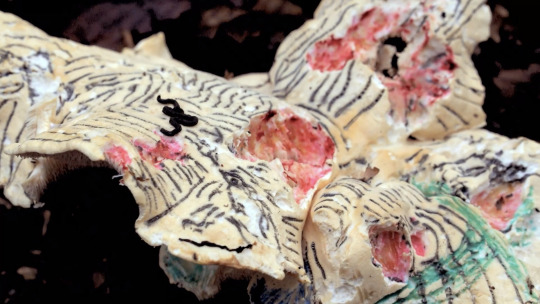

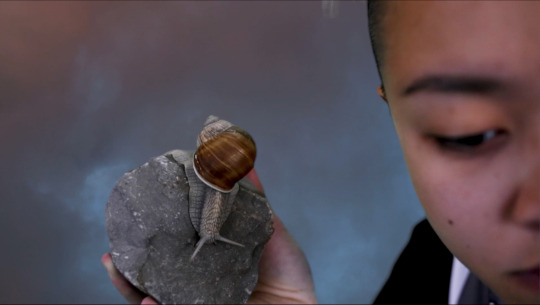

LIQUID TIMES, EMBODIED PLACES
Short film programme
16 October, 2021, 10:00 p.m. Rote Bar, Volkstheater Arthur Schnitzler-Platz 1, 1070 Wien
Part of the festival THE NEW NORMAL Der Mensch, die Natur und das Leben in Zeiten (nach) der Pandemie
Curated by Christoph Gurk, Matthias Seier Film programme curated by Katharina Swoboda and Lisa Truttmann
Animals, plants, viruses, objects, algorithms and weather phenomena: they all interact with us. We are intertwined with innumerable organisms within ecological circuits. As unsettling as the Faustian pact with technology may seem in this light, we depend on it if we are to find a way out of the current crises. The Vienna-based platform for art and moving image, The Golden Pixel Cooperative, is curating a late-night film programme for The New Normal. Shifting through various decades and genres, the Rote Bar at Volkstheater presents cinematic confrontations with people and nature, on the environment and the Capitalocene, on entanglements and liminal borders: flora, fauna, proliferation - in 25 frames per second.
About the festival: The New Normal Tickets: €7.00
Film programme (90 min.)
Imaginary Explosions, episode 1, Eyjafjallajökull, Caitlin Berrigan, 2018, 11 min. Europium, Lisa Rave, 2014, 21 min. Studies after Nature, Katrin Hornek, 2015, 9 min. Jaime's House, Marie Gavois, Michel Klöfkorn, 2021, 5 min. Every Rupture, Sasha Litvintseva, 2020, 13 min. Liquid ground, Enar de Dios Rodríguez, 2021, 32 min.
Films
Caitlin Berrigan: Imaginary Explosions, episode 1, Eyjafjallajökull, 2018 English, with English subtitles, colour, 11 min.
Imaginary Explosions follows an affiliation of transfeminist scientists cooperating with the desires of the mineral earth to simultaneously erupt all volcanoes. Through episodic videos, the scientists interpret volcanic activities across place and time. Their shared objectives are to divest technoscientific instruments of their military and corporate power, and to re-embody them in the service of the mineral earth. Imaginary Explosions draws upon geology and embodied knowledges to investigate how deep time and interspecies communication might assist us in radical planetary transformation.
The first video episode focuses on the 2010 eruption of the volcano, Eyjafjallajökull, in Iceland, when the deep time of volcanic activity ruptured into the human time of global air travel. Timescales and affective embodiment shift across geological time, snail time, human time, and the rapid pace of the news media cycle. Artists and scholars whose real-life work pushes the limits of science and culture depict fictionalized versions of themselves in the videos and collaborate on the scores, narratives, and sculptures. The speculative fiction cosmology explores what other presents and futures become possible once we begin to think beyond the framework of the human.
Lisa Rave: Europium, 2014 English and German, with English subtitles, colour, 21 min.
What does the magical spiritualism of indigenous peoples have to do with profane digital flat screens, and what connects the traditional shell money “tabu” to European currency? Lisa Rave’s Europium draws connections between Papua New Guinea’s colonial past and the planned excavation of the rare earth element Europium from the Bismarck Sea (Pacific Ocean). Using various levels of imagery, the essay film weaves a narrative around Europium, whose fluorescent qualities are used to validate European banknotes and to ensure the brilliance of colours on flat-screen surfaces. It describes this seemingly mundane fact as a return and repetition of history, pointing to the human and ecological violence inherent in the extraction and transformation of a raw material into monetary value – while also exposing the invisible ghosts of the past as they appear in the modern objects of our lives.
Katrin Hornek: Studies after Nature, 2015 No dialogue, colour, 9 min.
Studies after Nature is a set of instructions, an episodic film about playful interaction with nature after the end of its naturalness. In a search for the shifting forces behind forms, mushrooms (as creatures between the categories of animals and plants) are used to understand the fluid relationship between human, object, and nature.
Marie Gavois, Michel Klöfkorn: Jaime's House, 2021 No dialogue, colour, 5 min.
The lockdown came as a surprise during our shooting in the Spanish Pyrenees. From one day to the next, the whole country was placed under house arrest. We were hiding in the mountains. Where else were we supposed to go? Are we already living in a collage, but haven’t noticed yet?
Presented in collaboration with Betty Schiel, Frauen* Film Fest Dortmund+Köln.
Sasha Litvintseva: Every Rupture, 2020 English, colour, 13 min.
Ein Kreuzfahrtschiff während des Brexit-Referendums. Eine Vogelkolonie, die unwissentlich den Wald tötet, den sie ihr Zuhause nennen. Eine Welt in einer Pandemie. Nichts ist ein abgeschlossenes System. In der Bewegung durch diese drei Ökologien hinterfragt der Film, was alte Bilder nach einem Bruch bedeuten können und eröffnet einen Raum der Trauer.
Enar de Dios Rodriguez: Liquid ground, 2021 English with German subtitles, color, 32 min.
Although the oceans make up more than 70% of the Earth, until now only a very small part of the seabed has been mapped. However, in recent years, the mapping of these spaces has accelerated due to different economic, geopolitical and scientific interests, determined to build a “new continent” to be explored and exploited under the sea. Liquid ground is a video essay that takes as its thematic axis the ocean floor and its current cartography to talk about colonialism, ecology and representation.
Shaped by a wide variety of found material—from the illustrations of the first worldwide oceanographic expedition, to current technologies and visions related to oceans floors — Liquid ground functions as a reminder of the liquid grounds that, in reality, sustain and compose us. Moreover, it is a call to disobey the stability of the arbitrary, extractive and limiting lines that are drawn over space. Like any other form of knowledge, Liquid ground is also a set of riddles.
Image credits: Katrin Hornek, Studies after Nature (film still), 2015 Event documentation, Lisa Truttmann Caitlin Berrigan, Imaginary Explosions, episode 1, Eyjafjallajökull (film still), 2018 Enar de Dios Rodríguez, *Liquid ground *(film still), 2021
0 notes
Text
Here and now
It is strange that in modern times with all our technological advances and understanding of how nature / technology works … there are still 30% of all adult males circumcised (thereof two-thirds being Muslims). The current male circumcision rate is about 5,000 per day, or 1,8 million per year.
For female circumcision (all types): about 200 million girls and woman have suffered some form of female genital mutilation, and about three million are considered at risk of undergoing FGM annually. Source: https://www.who.int/teams/sexual-and-reproductive-health-and-research/areas-of-work/female-genital-mutilation/prevalence-of-female-genital-mutilation
All this means that ancient rites and traditions are still a significant ‘indicator’ of humanity (better: human conditions). So, on the one hand quantum computers and on the other: ‘knifes and stones’ (including surgical tools).
And not to forget: at least two monotheistic religions do not conceive male circumcision (and partially also female circumcision) as ‘inhumane’ and therefore forbidden, on the contrary, the are more or less obliged to do this in the name of their God.

Picture: Circumcision of Abraham, from the Bible of Jean de Sy, ca. 1355-1357, between circa 1355 and circa 1357. Source: https://ru.pinterest.com/pin/498281146250652156/. Public Domain
Jewish religion: male circumcision is a prerequisite for their holy covenant with God
Islam: here, the situation is a bit trickier, because it is recognized that male and female circumcision had been around long before their religion was established. For male circumcision: they follow the rules of Abraham.
Islam: for female circumcision: they (partially) kept tribal and community rites and integrated them into their religion and made them acceptable as ‘not strictly demanded’ but ‘honorable’ to do. Though there have been quite some Fatwas against female circumcision, not much has changed (see citations: Master Thesis Dörthe Engels: The Islamic Law Assessment of Female Circumcision).

Picture: Anonymous Beschneidung Christi. Kunsthistorisches Museum; circa 1490 to 1500 ; copyright holder: Belvedere, Wien; RKDimages, Art-work number 264894. This file is licensed under the Creative Commons Attribution-Share Alike 4.0 International license
Christianity: male genital circumcision was strongly disfavored and the focus was on the ‘circumcision of the heart’. But it must be noted that the Orthodox Churches practiced male circumcision after the 12th century (or earlier) and that Coptic Christians in Egypt used to practice female circumcision, see: https://copticliterature.wordpress.com/2014/03/12/prevalence-of-and-support-for-female-genital-mutilation-within-the-copts-of-egypt-unicef-report-2013/
OK, so this means that male circumcision will not go away anytime soon, probably never.
What about FGM: I regret to say that I don’t expect to see much progress in the next 10 to 20 years. Why: because it needs to change the societal and cultural settings of many of the African countries / tribes / families. How long will it take: 50 years, 100 ?

HMG was and still is done for (alleged) ‘health purposes’ as well as for many other reasons like: group and ethnical identity, rite of passage, prevention of masturbation, and for FGM/C: cultural value of virginity, value for marriage, social acceptance.
And yet, we (I) should do our best to follow the recommendations of the WHO, i.e.to focus on:
· strengthening the health sector response: developing and implementing guidelines, tools, training and policy to ensure that health care providers can provide medical care and counselling to girls and women living with FGM and communicate for prevention of the practice;
· building evidence: generating knowledge about the causes, consequences and costs of the practice, including why health care providers carry out the practice, how to abandon the practice, and how to care for those who have experienced FGM;
· increasing advocacy: developing publications and advocacy tools for international, regional and local efforts to end FGM, including tools for policy makers and advocates to estimate the health burden of FGM and the potential public health benefits and cost savings of preventing FGM.
0 notes
Photo

Blick ins Atelier von Alexandra Meyer in Basel
Virtuell besuchen wir Kunstschaffende, die mit dem Museum verbunden sind, in ihren Ateliers. Es interessiert uns, woran sie gerade arbeiten, was sie beschäftigt und wie sie ihre Arbeit strukturieren. Alexandra Meyer (*1984) ist mit den Werken «Form» von 2020 und «Scar» von 2016 an unserer Ausstellung «MEMORY. Über die Erinnerung und das Vergessen in ungewöhnlichen Zeiten» (Kunstmuseum Olten, 23.1.–18.4.2021) beteiligt. Die Schau kombiniert aktuelle Projekte von Kunstschaffenden, die sich mit der Erinnerung, aber auch dem Vergessen auseinandersetzen mit ausgewählten Werken aus der Museumssammlung.

Alexandra Meyer: Form, 2020 Inkjetprint auf Fotopapier, 107 x 150 cm Ausstellungsansicht Kunstmuseum Olten, 2021 Foto: Kaspar Ruoff


Alexandra Meyer: Scar, 2016 Video mit Audio, 2:42 min Ausstellungsansicht Kunstmuseum Olten, 2021 & Videostill Foto: Kaspar Ruoff & Alexandra Meyer
Katja Herlach (stv. Direktorin) hat Alexandra Meyer ein paar Fragen gestellt und sie gebeten, uns Einblick in seine Arbeitsstätte und in die Entstehung ihrer neusten Arbeiten zu geben. Wissen wollte sie auch, welche Rolle die Erinnerung für sein Schaffen hat:
Antworten der Künstlerin
1 Liebe Alexandra, wie geht es Dir heute?
Es geht mir gut, auch weil nun die Museen wieder geöffnet haben und anstehende Ausstellungen nun (wieder) laufen. Das ist ein Lichtblick für uns alle und ich freue mich auf die bevorstehenden Projekte und Ausstellungsbesuche.
2 Was hat die Corona-Krise für Dich verändert? Was wird aus dieser Zeit in Erinnerung bleiben?
Durch die eingeschränkte Mobilität steht das Atelier viel mehr im Zentrum. Ich kann mich gut in meine Arbeit vertiefen, da mein Alltag sehr zurückgezogen ist. Der vermehrte Austausch mit Freunden und anderen Kunstschaffenden fehlt leider und auf den freue ich mich auch.
Nebst meiner Tätigkeit als Künstlerin arbeite ich am Unispital in Zürich. Ich gehörte zu den Wenigen, die während des ersten Lockdowns den menschenleeren Pendlerzug nehmen mussten. All die schlafenden Orte, die Stille und die seltsame Stimmung, wird mir unter anderem in Erinnerung bleiben.
3 Wie sieht Dein Arbeitsort aus?
Mein Arbeitsort befindet sich im Atelierhaus Klingental. In meinem Atelier herrscht praktisch immer eine geordnete Unordnung, da ich immer wieder mit verschiedenen Materialien experimentiere und den Raum unterschiedlich nutze und ständig Dinge herumschiebe und umräume.

Atelier von Alexandra Meyer im Atelierhaus Klingental, Basel
4 Woran arbeitest Du gerade?
Ich arbeite meist an verschiedenen Dingen gleichzeitig, die manchmal auch ineinanderfliessen. Es ist nicht immer von Anfang an klar, mit welchem Medium ich eine Arbeit fertigstelle. Es ist ein ständiges Ausprobieren, Neubetrachten und Beurteilen.
Momentan arbeite ich wieder mit Kohle auf Papier, die dann zu etwas skulpturalem werden. Parallel entstehen Fotografien und Objekte, die ich vielleicht auch mit den Kohle-Arbeiten kombiniere, …das muss sich noch zeigen.

Atelieraufnahme, 2021, Foto Alexandra Meyer

Alexnadra Meyer: Objekt aus der Arbeit Bäuche, 2021 Foto: Alexandra Meyer

Atelieraufnahme, Foto Alexandra Meyer
5 Aktuell bist Du mit zwei Werken in unserer Ausstellung «Memory. Über die Erinnerung und das Vergessen in ungewöhnlichen Zeiten» beteiligt. Kannst Du diese Arbeiten ganz kurz vorstellen?
Die Fotografie «Form», welche ganz neu ist, zeigt ein stark gebrauchtes Kuchenblech im vergrösserten Massstab. Die unzählig feinen Schnitte sind gut erkennbar und erzählen die Geschichte eines über mehrere Generationen verwendeten Backblechs. Ursprünglich hat es einmal meiner Grossmutter gehört. Es wurde in den letzten 15 Jahren im Ferienhaus im Tessin rege benutzt und jedes Mal, wenn ich dort war, ist es mir ins Auge gesprungen. Ich musste an all die meist weiblichen Personen denken, die damit gebacken haben.


Eine weitere Arbeit ist das Video «Scar» von 2016. Darin werden nacheinander fein säuberlich acht gebrauchte Seifen auf einen schwarzen Untergrund gelegt. Zu hören sind dabei kurze Erinnerungsgeschichten von unterschiedlichen Personen (in Mundart) zu ihren jeweiligen Narben – also «Narbengeschichten.»

6 Wenn Du Dich zurückerinnerst, an den Anfang des Entstehungsprozesses dieser Werke, kannst Du uns dann etwas darüber sagen, wie Deine Ideen / Projekte entstehen? Wo Du Inspiration findest? Oder wie Du Dich für ein Thema, ein Konzept oder eine spezifische Umsetzung entscheidest?
Das ist sehr unterschiedlich. Ideen müssen oft reifen. Viele Entwürfe oder Materialen werden nach dem ersten «Inspizieren» auf die Seite gestellt und manchmal auch kurz vergessen. Die Seifen beispielsweise, die im Video zu sehen sind, hatte ich gesammelt, weil sie interessante Objekte sind und ich wusste noch nicht, was ich mit ihnen machen wollte. Fast ein Jahr später, als ich unabhängig die Narbengeschichten sammelte, fielen sie mir wieder in die Hände und so kam es zu dieser Arbeit.
7 Hat Dich das Thema der Erinnerung auch in anderen Werken beschäftigt? Ja, immer wieder. Das Video «Scar» ist 2016 entstanden und die Fotografie «Form» erst eben gerade. Erinnerungen sind Bilder, womit ich immer wieder gerne arbeite. Denn sie sind an Stimmungen und Emotionen gekoppelt, die helfen können, eine Richtung zu geben, um das Unwichtige wegzulassen.
8 Wo kann man Deine Kunst aktuell sonst noch sehen, und was sind Deine nächsten Projekte?
Nebst der Ausstellung im Kunstmuseum Olten, zeige ich Arbeiten in der Galerie Tony Wuethrich in Basel.
Weitere Projekte stehen an, wie z. B. in einem Hotel, wo verschiede Zimmer bespielt werden. Ich hoffe die Situation bleibt stabil, damit wir alle endlich wieder zeigen und schauen gehen können. Aufgezeichnet am 18.3.2021

Alexandra Meyer vor ihrer Fotografie «Form» in der Ausstellung «Memory» im Kunstmuseum Olten
Alexandra Meyer
wurde 1984 in Winterthur geboren und ist in der Nähe von Schaffhausen aufgewachsen. Heute lebt und arbeitet sie in Basel, wo sie an der Hochschule für Gestaltung und Kunst ihr Masterstudium in Fine Arts 2019 abgeschlossen hat. Seit 2011 hat die Künstlerin eine rege Ausstellungs- und Performance-Tätigkeit entfaltet, u. a. mit Einzelausstellungen in der Kunsthalle Vebikus, in den Kunstkästen und im Museum zu Allerheiligen in Schaffhausen, in der Schwarzwaldallee in Basel, im sic! Elephanthouse in Luzern oder im Dienstgebäude in Zürich. Ihr Schaffen ist in zahlreichen öffentlichen und privaten Sammlungen vertreten und wurde wiederholt ausgezeichnet, etwa mit dem Kiefer Hablitzel Kunstpreis, dem Manor Kunstpreis Schaffhausen oder dem UBS Förderbeitrag Bildende Kunst.
Die Kunst von Alexandra Meyer besticht durch leisen Humor und eine ungezwungene Leichtigkeit. Mit feinem Gespür und aus oftmals überraschender Perspektive thematisiert sie die grossen Fragen der menschlichen Existenz im Zusammenspiel von Körper, Geist und Psyche. Dafür bedient sie sich unterschiedlichster Medien wie Video, Performance, Fotografie, Installation, Skulptur oder Zeichnung.
Gemeinsam ist ihren Arbeiten eine auf das Wesentliche reduzierte, präzise und zugleich einprägsame Ästhetik von grosser Symbolkraft, die einem ganz schön in die Knochen fahren kann. Denn oft stehen starke Gefühle am Beginn einer Arbeit. Maximale Sparsamkeit schafft dann maximale Verdichtung, wie in einem Haiku. Komplexe Zusammenhänge werden in einfache Zeichen übersetzt und häufig an körperliche Erfahrungen zurückgebunden. Damit macht die Künstlerin deutlich, wie sehr der Körper Austragungsort von gesellschaftlichen Erwartungen ist – und wie man künstlerisch daran rütteln kann.
Mit dem Kunstmuseum Olten ist Alexandra Meyer schon länger verbunden. 2014 zeigte sie in unserer Ausstellung «Ich. Du. Die Anderen – Künstler portraitieren» das Video «Head» von 2012 und die Fotoarbeit «Eheringe» von 2011. Für ihre Installation «Portraits» von 2017, die aus über 90 Reagenzgläsern mit «Herzblut» von Künstler*innen und Kurator*innen besteht, hat sie u. a. auch unserer Direktorin, Dorothee Messmer, Blut genommen, während diese ihrerseits viel Herzblut in einen Text für den Katalog «Alexandra Meyer» (Schaffhausen / Wien: Museum zu Allerheiligen / Verlag für Moderne Kunst, 2017) gelegt hat.
Mehr über Alexandra Meyer erfahren:
Website der Künstlerin
SIKART Künstlerlexikon
Publiziert am 24.3.2021
#Balkon#Blick in Ateliers#Ateliereinblick#Atelier#Alexandra Meyer#Basel#Ausstellungen#1OG#Memory#Video#Fotografie
0 notes
Text
Gagosian New York to Present John Chamberlain Exhibition Curated by Susan Davidson, Opening September 28
September 23, 2021
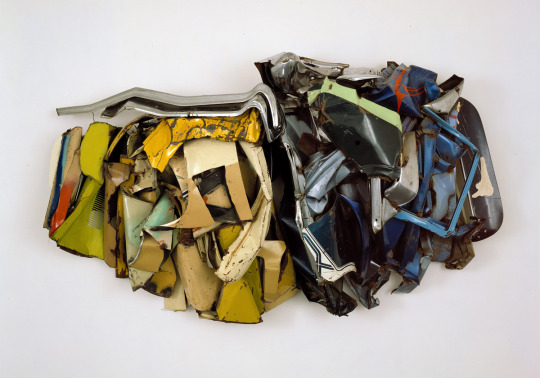
Gagosian to Present Stance, Rhythm, and Tilt, an Exhibition by John Chamberlain Featuring Sculptures from Every Decade of the Artist’s Career Opening September 28, 2021, at 522 West 21st Street, New York __________ NEW YORK, September 23, 2021—Gagosian is pleased to present Stance, Rhythm, and Tilt, an exhibition of sculptures by John Chamberlain (1927–2011). Curated by art historian Susan Davidson, organizer of the artist’s 2012 retrospective at the Solomon R. Guggenheim Museum, New York, the exhibition takes its title from a conversation between Chamberlain and poet Robert Creeley, and gathers work made over a sixty-year period. There’s all these different variations . . . coming out looking like the sculptures that are what you might call the signature mark. The stance, and the rhythm, and the tilt are all in there. . . . But I went at the materials the way the materials evidently told me to. You squeeze one and you wad another, and you melt another . . . so these peculiarities were starting to pay off for me. —John Chamberlain Chamberlain developed his distinctive aesthetic and techniques early in his career, citing the time he spent on an aircraft carrier as a member of the US Navy in the mid-1940s as influential on his understanding of scale and perspective. By compressing metal to generate complex folds and textures, then welding disparate elements together, he arrived at an innovative variant on three-dimensional collage that emphasizes volume and mass regardless of overall proportion. Chamberlain’s profound respect for the inherent properties of his materials is evident in the heterogeneity of his forms and the directness of his process, with the range of works on view also demonstrating the recurrence of certain physical gestures.
Stance, Rhythm, and Tilt samples from every decade of Chamberlain’s lengthy creative life. The earliest inclusion, a small abstract construction of steel segments titled Projectile D. S. N. Y. (1957), presages his much larger and more colorful works of subsequent years. Works made throughout the decades revisit motifs and hues; Diamond Lee (1969) and Leaning Tower of Youth (1985) both feature salvaged white-painted and chrome-plated automobile steel, while Colonel Splendid (1964) and Sugar Tit (1964) employ colored metal in reflective and matte finishes. Wall-hanging sculptures such as White Thumb Four (1978) present varied, sometimes seemingly precarious, but always carefully arranged intersections of quasi-organic forms. Juxtaposing reflective surfaces with flaking paint and hard edges with exuberant curves, Chamberlain displays a fusion of technical mastery and formal verve that resonates with the exhibition title’s allusion to posture and motion. The aforementioned works—as well as more recent examples such as Dearie Oso Enseau (1992) and TAMBOURINEFRAPPE (2010)—evince the pervasive influence of Abstract Expressionism, Pop art, and Minimalism on Chamberlain’s thought and method; they also nod to the luxuriant drapery characteristic of High Baroque sculpture. A mercurial approach to color is evident, too: Dearie Oso Enseau features a multihued section surrounded by black and white, while TAMBOURINEFRAPPE is wrapped in red with a crest of multicolored chrome-plated steel. Finally, the works’ obliquely evocative titles reflect Chamberlain’s interest in poetic language, which was sparked by the year he spent studying with poet Charles Olson at the Black Mountain College, North Carolina, from 1955 to 1956. John Chamberlain was born in Rochester, Indiana, in 1927, and died in New York in 2011. Collections include the Museum of Modern Art, New York; Solomon R. Guggenheim Museum, New York; Whitney Museum of American Art, New York; Dia: Beacon, NY; Chinati Foundation, Marfa, TX; Menil Collection, Houston; Los Angeles County Museum of Art; Museo Jumex, Mexico City; Tate, London; Museu Coleção Berardo, Lisbon; Stedelijk Museum, Amsterdam; Museum für Moderne Kunst, Frankfurt am Main, Germany; Museum Moderner Kunst Stiftung Ludwig Wien, Vienna. Exhibitions include Sculpture, An Extended Exhibition, Dia Art Foundation (1982–85); Sculpture 1954–1985, Museum of Contemporary Art, Los Angeles (1986); Staatliche Kunsthalle Baden-Baden, Germany (1991); Sculpture, Stedelijk Museum, Amsterdam (1996); Foam Sculptures (1966–79); Photographs (1989–2004), Chinati Foundation, Marfa, TX (2005–06); American Tableau, Menil Collection, Houston (2009); It Ain’t Cheap, Dan Flavin Art Institute, Dia Bridgehampton, NY (2014); and Inverleith House, Royal Botanic Garden Edinburgh (2015). Chamberlain has been the subject of two retrospectives at the Solomon R. Guggenheim Museum, New York (1971 and 2012). JOHN CHAMBERLAIN Stance, Rhythm, and Tilt Opening reception: Tuesday, September 28, 4–7pm September 28–December 11, 2021 522 West 21st Street, New York _____ John Chamberlain, White Thumb Four, 1978, painted and chrome-plated steel, 71 1/2 × 112 1/2 × 32 inches (181.6 × 285.8 × 81.3 cm) © 2021 Fairweather & Fairweather LTD/Artists Rights Society (ARS), New York
9 notes
·
View notes
Text
Palaeohierax gervaisii
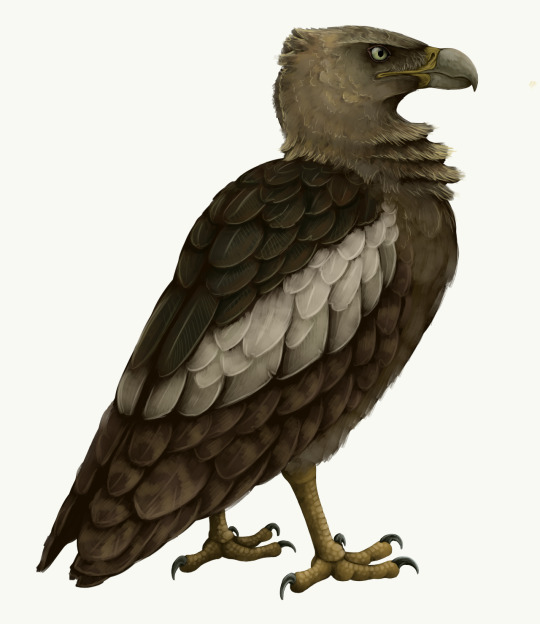
By Scott Reid
Etymology: Old Hawk
First Described By: Milne-Edwards, 1863
Classification: Dinosauromorpha, Dinosauriformes, Dracohors, Dinosauria, Saurischia, Eusaurischia, Theropoda, Neotheropoda, Averostra, Tetanurae, Orionides, Avetheropoda, Coelurosauria, Tyrannoraptora, Maniraptoromorpha, Maniraptoriformes, Maniraptora, Pennaraptora, Paraves, Eumaniraptora, Averaptora, Avialae, Euavialae, Avebrevicauda, Pygostaylia, Ornithothoraces, Euornithes, Ornithuromorpha, Ornithurae, Neornithes, Neognathae, Neoaves, Inopinaves, Telluraves, Afroaves, Accipitrimorphae, Accipitriformes, Accipitridae
Status: Extinct
Time and Place: Sometime between 27 and 22 million years ago, from the Chattian of the Oligocene through the Aquitanian of the Miocene.


Palaeohierax is known from near Chaptuzat, in the Auvergne-Rhône-Alpes of France
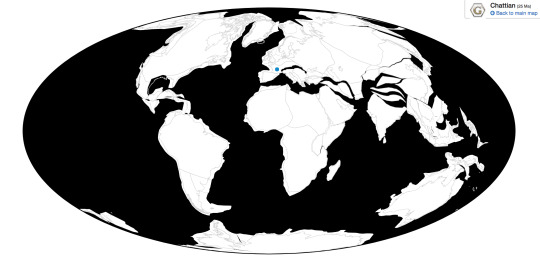
Physical Description: Palaeohierax is one of many fossil birds known from mainly toe bones, but surprisingly, this toe bone is well preserved and tells us a decent amount about this dinosaur. This toe clearly marks Palaeohierax as a raptor, probably a daytime one; it is wider and flatter than those of hawks, and more robust than hawks as well, linking it in most likely to Ospreys or Eagles. It is also very similar to the living Palm-Nut Vulture, so it’s difficult to place it exactly within the Accipitrids. It has a less broad outer surface than Eagles, and does have a little bit of an enlarged barrel to the toe as in the Palm-Nut Vulture. However, it has small portions to the bone and strong edges, much like eagles. A part of a leg bone and hand bone have been found as well, but they are more fragmentary than the toe bone.
So, in short, Palaeohierax would have resembled a cross between hawks and the Palm-Nut Vulture - sort of a catch-all Accipitrid, but robust as well. This means it may have actually resembled the Bearded Vulture in appearance. It would have been about the same size as the modern White-Tailed Eagle, which has a typical wingspan of up to 2.45 meters - making Palaeohierax on the larger side for birds of prey.
Diet: As a large, robust bird of prey, Palaeohierax would have mainly fed upon other animals such as mammals, reptiles, and birds.
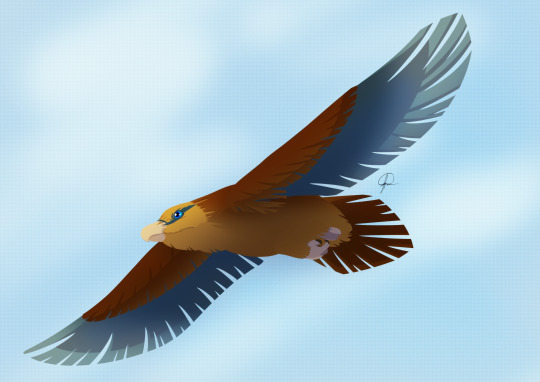
By José Carlos Corteés
Behavior: Palaeohierax would have probably resembled living birds of prey in its behavior, spending much of its day flying around and searching for prey; it would have dived down upon spotting them and used its large talons to grab onto its food (which would have been especially robust and muscular). It’s possible it would have also eaten carrion, given its similarities to some vultures; but it’s uncertain if that would have made up the bulk of its diet, especially given how its toes seem well adapted for hunting prey. As a dinosaur, it would have most likely taken care of its young, but more specifics on its breeding behavior are unknown.
Ecosystem: Palaeohierax probably lived alongside the shoreline of France at the time, given what sorts of other animals have been found in the same time and region. That being said, the exact fossil location of Palaeohierax has not been well reported. This was a fairly lush coastal environment, with a variety of pine trees, as well as many kinds of algae.
Here, there were many kinds of animals that Palaeohierax would have been able to feed upon - different turtles such as Ergilemys and Ptychogaster; lizards like Pseudeumeces, Dracaenosaurus, and Ophisauromimus; many kinds of rodents, shrews, a horse-like rhino relative called Allacerops, true rhinoceroses by the names of Molassitherium and Ronzotherium, and some early cats like Proailurus that would have probably attempted to hunt Palaeohierax in return. There was also a large, bulky hoofed mammal called Paenanthracotherium. As for other dinosaurs, they weren’t quite as commonly fossilized; but the gannet Empheresula was present in the same general time and place.
Other: Palaeohierax, despite its mysterious taxonomic placement within the birds of prey, is one of the few vulture-like dinosaurs known from the Neogene of Europe; and one of only a handful of Accipitrids from this time and place overall.
~ By Meig Dickson
Sources under the Cut
Augé, M. L. 2005. Evolution des lézards du Paléogène en Europe. Mémoires du Muséum national d'histoire naturelle 192:1-369
Boev, Z. 2010. Gyps bochenskii sp. N. (Aves: Falconiformes) from the Late Pliocene of Varshets (NW Bulgaria). Acta Zoologica Bulgarica 62 (2): 211 - 242.
Boev, Z. 2012. Circaetus rhodopensis sp. N. (Aves: Accipitriformes) from the Late Miocene of Hadzhidimovo (SW Bulgaria). Acta Zoologica Bulgarica 64 (1): 5 - 12.
Lambrecht, K. 1933. Handbuch der Palaeornithologie. 1-1024
Lydekker, R. 1891. Catalogue of the Fossil Birds in the British Museum (Natural History). British Museum (Natural History). 28.
Manegold, A., M. Pavia, P. Haarhoff. 2014. A new species of Aegypius vulture (Aegypiinae, Accipitridae) from the Early Pliocene of South Africa. Journal of Vertebrate Paleontology 34 (6): 1394 - 1407.
Mayr, G. 2009. Paleogene Fossil Birds. Springer Science & Buisness Media: 159.
Milkovsky, J. 2009. Evolution of the Cenozoic marine avifaunas of Europe. Annales Naturhistorisches Museum Wien 111(A):357-374
Milne-Edwards, A. 1869. Recherches anatomiques et paléontologiques pour servir à l'histoire des oiseaux fossiles de la France. G. Masson, France. 456 - 458.
Scherler, L., F. Lihoreau, and D. Becker. 2019. To split or not to split Anthracotherium? A phylogeny of Anthracotheriinae (Cetartiodactyla: Hippopotamoidea) and its palaeobiogeographical implications. Zoological Journal of the Linnean Society 185(2):487-510
#Palaeohierax#Palaeohierax gervaisii#Bird#Dinosaur#Raptor#Bird of Prey#accipitrimorph#Birds#Dinosaurs#Prehistoric Life#Birblr#Palaeoblr#Prehistory#Paleontology#Hawk#Eagle#Vulture#Paleogene#Neogene#Eurasia#Carnivore#Flying Friday#biology#a dinosaur a day#a-dinosaur-a-day#dinosaur of the day#dinosaur-of-the-day#science#nature#factfile
147 notes
·
View notes
Photo

HA Radiowork by Roberto Paci Dalò
Composed, performed, produced by Roberto Paci Dalò
Voice Hannah Arendt
Singing voices Luisa Cottifogli, Caterina Pilati Created at Giardini Pensili (Rimini) Mixed by Roberto Paci Dalò, Alessandro Renzi
Mixing supervisor Andrea Felli (Farmhouse, Rimini)
Text researches Margherita Wolenski Produced by Elisabeth Zimmermann Production ORF Kunstradio In collaboration with Giardini Pensili
First broadcasting 27 December 2020, Ö1 Kunstradio - Radiokunst
For Lia Dalò
HA is a sound forest created from the real voice of Hannah Arendt (1906-1975) intertwined with instrumental and electronic sounds. A sensorial journey in her phonetics where words are transformed into cartographical sonic materials. A cinematic and experimental approach where, however, even complex materials are organized in a radio composition accessible to all audiences. A long and laborious work of composition and editing has transformed Arendt's voice into a grid, a map, an acoustic immersive architecture made up of many micro cells of a few seconds each. Every one with its own parameters (volume, reverb, spatialisation, etc.) in order to create an always moving dynamic multi layers radio composition.
The reference book of the whole project is her most seminal work The Human Condition (1958) and its three human activities (labor, work, action) create sections of the radiowork. Together with Arendt’s own texts, those of the Italian philosopher Adriana Cavarero and Elias Canetti were utterly important for the project.
"The voice as an element that frees language from the constraint of the symbolic order" (Canetti)
“Canetti himself claims to be a listener rather than an observer. This predilection for sound matter, far from presenting itself as a curious trait, is claimed by him as a cognitive specialty, particularly prolific and original.(...) A specific term would have to be found to designate this sonority of plural voices that utter different words simultaneously, yet do not produce a cacophony. And, of course, this term should be so flexible that it could also include the harmonic sound of a plurality that recites or sings in unison, yet it is not a harmony. Many elements suggest calling it pluriphony. " (Adriana Cavarero)
The soundscapes in the piece were recorded by the artist on the 27th January 2018 at the Western Wall in Jerusalem.
Roberto Paci Dalò considers HA to be a seminal work for him: here he reflects on his career as radio-maker by putting back into play early actions and methodologies together with his peculiar today’s practice combining avant-garde, popular culture and technology. Roberto grew up alongside friends like Robert Adrian and Heidi Grundmann who helped him to forge his own radio methodology – and true passion – that has been able to develop in over thirty years of international radio projects among the most adventurous and dedicated to of the continuous encounter between languages and territories for a real media dramaturgy (a term he coined in the mid-Nineties to define his work).
HA has been initially developed in 2018 at the JRC Joint Research Center - European Commission in Ispra (Italy). The collaboration with the European Commission engineer and philosopher Nicole Dewandre played a key role in its development leading to an investigation throughout Hannah Arendt's thought.
Roberto Paci Dalò has been working in collaboration with scientists at laboratories and the Centers for Advanced Studies of the JRC on topics such as Computational Linguistics and Natural Language Processing, Text Mining, Demolinguistics. During the first part of the project he created and premiered live in performance at JRC the piece ‘Space Is the Place’ for radio telescope sounds and modular synth. The project went on with Radio Arendt (a series of radio and philosophy workshops conducted by Roberto Paci Dalò and Nicole Dewandre in Barcelona, Sarajevo and Trieste); HA ARENDTRIESTE, interactive sound-video installation created for the Both Ways exhibition presented within Trieste ESOF 2020 and produced together with Trieste Contemporanea (here you can visit the VR version of the exhibition); HANNAH, live radio performance presented on Radio India - Teatro di Roma as part of the ‘Atlas of Transitions’ Biennale’s program (here is the podcast).
Thanks to Adriana Cavarero, Nicole Dewandre, Giuliana Carbi Jesurun, Marina Lutmann, Adriaan Eeckels, Elisabeth Zimmermann, Heidi Mancino.
Thanks for their precious listening during the making of the piece to Gabriele Frasca, Stephanie Chauvel, Benedetta Calisesi Stern.
HA was completed during Hanukkah 2020.
It is suggested to listen to the piece with headphones in order to fully experience the movements and spatialisation of the sound.
Bibliography
Hannah Arendt, The Human Condition, Chicago: The University of Chicago Press, 1958.
Elias Canetti, Masse und Macht, Hamburg: Claassen, 1960.
– Die Stimmen von Marrakesch. Aufzeichnungen nach einer Reise, Regensburg: Reihe Hanser, 1967.
Adriana Cavarero, Democrazia sorgiva, Milano: Raffaello Cortina, 2019.
Roberto Paci Dalò, was born in Rimini, grew up in Tremosine sul Garda and he has lived in Berlin, Naples, Rome, and periodically in Vancouver BC; he currently lives and works in Rimini and Tremosine sul Garda. His work has won him international admiration from – amongst the others – John Cage, Giya Kancheli, Robert Ashley, and Aleksandr Sokurov. Composer, musician, director, author, sound and visual artist, radio-maker his work has been presented worldwide in museums, biennials, theatres and festivals including the Venice Biennale, Wien Modern, Fundaciò Joan Mirò Barcelona, Power Station of Art Shanghai, Vienna Opera House, Palais des Beaux Arts Bruxelles, Triennale Milan, ZKM Karlsruhe, Ars Electronica Festival Linz, Bauhaus Weimar, Musica Strasbourg, MaerzMusik Berlin, Experimental Intermedia New York, Western Front Vancouver. He leads the group Giardini Pensili (co-founded in 1985) and he has been the recipient of the Berliner Küsterprogramm des DAAD Fellowship (1993-1994) and the Premio Napoli per la lingua e la cultura italiana (2015). He created and directed LADA L'Arte dell'Ascolto radio festival (Rimini, 1991-1998) and composed more then 50 radio works produced internationally. In 1995 he created Radio Lada, web radio conceived as an exhibition space for sound art. Founder and director of Radio Lada, Itaca - the electronic stage of the Teatro di Roma (1999-2001) and Velvet Factory (2006-2016). Collaborations include Kronos Quartet, Alvin Curran, Julia Kent, Fennesz, Robert Lippok, Patrizia Valduga, Rupert Huber, Terry Riley, Giorgio Agamben, Predrag Matvejevic', Guido Guidi, Fabrizio Modonese Palumbo, Gabriele Frasca, Tom Cora, David Moss, Paolo Tassinari, Stefano Boeri, Akio Suzuki, Philip Jeck, Stefano Scodanibbio, Scanner, Fred Frith, Gerfried Stocker, Horst Hörtner, Adriana Borriello, Peter Courtemanche. Since 2018 Expert and Artist at the European Commission. Roberto is member of the Internationale Heiner Müller Gesellschaft (Berlin) and the British Cartographic Society. He is professor of Exhibit and Interaction Design at UNIRSM Design (Republic of San Marino) where he is the founder and director of Usmaradio - radio station and Research Centre for Radiophonic Studies. Co-founder of ‘The School of Radio’ (2014). His latest book is Ombre (Quodlibet 2019).
0 notes
Text
Arpanatolia (Etkinlik)

“29 Ağustos’ta Anadolu mitolojisinden günümüze gelen eski enstrümanlarla yaptıkları interaktif performanslarıyla Arpanatolia bizlerle olacak.
“Dünyaca ünlü arp sanatçısı Çağatay Akyol’un kurduğu bu grupta sipsi, cura, ney ve kavalda Ferhat Erdem ve otantik perküsyonda Cemal Özkızıltaş yer alıyor. Binlerce yıl öncesinde Anadolu topraklarında yapılan müziklerde yoğun olarak kullanılan lir, arp ve nefesli çalgılar, daha sonraki çağlarda da kullanılarak ve yenilenen yapıları ve renkleriyle değerlerini artırarak günümüze kadar ulaşmış, tarihsel süreç içinde daha da gelişmiş ve değişmiş, ancak müzik kültürümüz içinde önem ve değerini korumuştur. İşte bu enstrümanlar şimdi Arpanatolia ile o zamandan beri ilk kez bir araya gelerek yeni ve farklı bir sentez oluşturuyor.”
Çağatay Akyol, arp Ferhat Erdem, sipsi, cura, ney, kaval Cemal Özkızıltaş, otantik perküsyon
Çağatay Akyol Arp eğitimine 1980 yılında 10 yaşındayken Ankara Devlet Konservatuvarında Doçent Kaysu Doğanay’ın öğrencisi olarak başladı ve 1988 yılında mezun oldu. Aynı yıl 19 yaşındayken Cumhurbaşkanlığı Senfoni Orkestrası’nda solist arpçı olarak göreve başladı.1989-1995 yılları arasında katılmış olduğu birçok uluslararası gençlik orkestralarında ülkemizi başarıyla temsil etmiş ve bu orkestralara katılan ilk genç Türk müzisyeni olarak da kendinden sonra gelen diğer genç birçok Türk orkestra sanatçısının önünü açarak bu platformlarda yer almalarına öncülük etmiştir. 1991 de Alman Akademisyenler (D.A.A.D.) bursu kazandı ve Berlin Müzik Akademisi’nde Mariana Schmidt Kriceberg ve Regina Herving ile çalışarak 1993 yılında üstün dereceyle mezun oldu.Salzburg Music Festival, Wien Modern, BBC Prohms, Amsterdam Mahler Festival, Budapest Spring Festival, Schleswig Holstein Music Festival, Festival de Radio France en Montpellier ve Ferrara Musica gibi festivallerde sahne aldı; Claudio Abbado, Bernard Haitink, Riccardo Chailly, Peter Eotvos, Michael Gielen, Yakov Kreisberg, James Judd, Giuseppe Sinopoli, Tugan Sokhiev, Daniel Gatti ve Daniel Harding gibi dünyaca ünlü şeflerle çalıştı. 1992 yılında misafir sanatçı olarak Berlin Runfunk Senfoni Orkestrası ve Dresdner Staats Kapelle’de görev aldı. Solist olarak yurtiçi ve yurtdışında birçok orkestra ile birlikte konserler veren sanatçı, 2006 yılında Felix Godefroid Uluslararası Arp Yarışması’na jüri üyesi olarak davet edildi. 2008-2010 yılları arasında Mahler Oda Orkestrası’nda konuk sanatçı olarak görev aldı.Lirik Arp ve Blokflüt (Kasım 2004) ve Cihat Aşkın’la Arp ve Keman (Temmuz 2009) olmak üzere Kalan Müzik etiketli iki CD’si vardır. 2011 yılında Anadolu’daki Hitit müziği temalı AB projesi Hattuşa temalı araştırmada Hitit arplarını dünyada çalan ilk ve tek kişidir. 2012 yılında Anadolu enstrümanlarıyla arpı buluşturan, Türk müzisyen Ferhat Erdem’le birlikte gerçekleştirdikleri Arpanatolia’yı kurdu ve bu proje ile birçok yurtiçi ve yurtdışı konserler gerçekleştirdi. 2012 yılında piyanist ve besteci Fazıl Say’ın Mezopotamya Senfonisi’nde bas blokflüt solisti olarak birçok konser gerceklestirdi. 2010-2015 yıllları arasında Anadolu Üniversitesi Devlet Konservatuvarında arp dersleri verdi. 2016 yılında iki kez Kore’ye davet edilen sanatçı 2017 yılında da Dünya Arp Kongresi’nde konser vermek üzere Hong Kong’a davet edildi. 2018 ve 2019 konser sezonunda Çin, Kanada, Ukrayna, Rusya, Almanya, Japonya, Amerika ve İtalya’dan konserler yapmak üzere davet almıştır.Sanatçı halen Cumhurbaşkanlığı Senfoni Orkestrası’nda solo Arp sanatçısı olarak görev yapmaktadır.
Ferhat Erdem Çocukluğunda her evde birkaç kişinin (Babası ve ağabeyi de dahil) çaldığı Teke Yöresi müzik kültürünün en önemli çalgılarından olan sipsiyi çalmaya başladı. O dönemler düğünlerin çeyizinde sipsi çaldı. Anadolu Üniversitesi İşletme Fakültesi Yönetim ve Organizasyon Bölümünden mezun oldu. Hacettepe Üniversitesi Güzel Sanatlar Enstitüsü Geleneksel Türk Müzikleri bölümünde Yüksek Lisans yaptı. Akşehir folkloru üzerine alan araştırması ve TRT repertuarına kazandırdığı ‘Akşehir ve yöresi müzikleri’ derleme çalışmaları yaptı. Burdur ve yöresinden türkü ve oyun havaları derleyip TRT repertuarına kazandırdı. 1986 yılında TRT Ankara Radyosu’nun açmış olduğu sınavı kazanarak Yurttan Sesler Korosu’na sipsi ve kaval sanatçısı olarak başladı. 1992 yılında Hacettepe Üniversitesi Halk Oyunları Topluluğu ile Polonya’nın Bidgoşh (Bydgoskie) kentinde yapılan Folk Müzik Festivali’nde solo icra dalında dünya birincisi oldu. Birçok yurtiçi ve yurtdışı festival ve konserlere katıldı. ODTÜ ve Hacettepe Üniversitesi’nde kaval öğrencileri yetiştirdi. Çağatay Akyol ile birlikte kurdukları “Arpanatolia” adlı gurupla Hollanda Kraliçesi ve Türkiye Cumhurbaşkanına Hollanda’nın Venlo kentinde ilk konserini verdi.Aynı gurupla Belçika Gent’te Europalia Sanat Festivali, Hong Kong Dünya Arp Kongresinde; Kanada’nın Toronto ve Vancouver, İtalya’nın Sardunya ve Carloforte, Macaristan’ın Budapeşte, Bulgaristan’ın Filibe, Varna ve Burgaz kentlerinde; Afyon Caz Festivali, Uluslararası Mersin Müzik Festivalinde; Ankara Çağdaş Sanatlar, Gaziantep Belediyesi, Bursa Belediyesi ve Ankara Filarmoni ve Kent Orkestralarıyla da “Senfonikanataolia” adıyla Anadolu’nun farklı kentlerinde konserler verdi. Ayrıca “Yamatolia” adında Türk ve Japon müzisyenlerden oluşan bir grupla Ankara’da Türk-Japon Vakfı’nda konserler verdi.Sanatçı halen TRT Ankara Radyosunda görev yapmaktadır. Cemal Özkızıltaş 1988 yılında Ankara’da doğdu. Lise yıllarında TRT Ankara Radyosu Türk Halk Müziği ve Türk Sanat Müziği gençlik korosu çalışmalarına katıldı. Kısa zamanda TRT bünyesindeki radyo ve televizyon programlarında yer almaya başladı. 2007 – 2015 yılları arasında Ankara Büyükşehir Belediyesi’ne bağlı Eğitim ve Kültür Daire Başkanlığı bünyesinde usta öğretici olarak görev yaptı. 2013 yılında Afyon Kocatepe Üniversitesi Devlet Konservatuarı, Türk Halk Müziği bölümünün Çalgı Eğitimi Anasanat Dalından mezun oldu. 2012 – 2015 yılları arasında Hacettepe Üniversitesi’ne bağlı Türk Halk Müziği korosunda eğitmen olarak görev yaptı. 2014 yılında Gazi Üniversitesi bünyesinde pedagojik formasyon eğitimi sertifika programını tamamladı. 2014 – 2015 yılları arasında Afyon Kocatepe Üniversitesi Türk Halk Müziği Bölümü Çalgı Eğitimi Ana Sanat Dalında sözleşmeli öğretim elemanı olarak ritim çalgıları dersini yürüttü. 2015 yılında ise TRT’nin açmış olduğu sanatçı sınavını kazandı. Kurum bünyesindeki birçok projede ritim saz sanatçısı olarak görev aldı. 2017 yılının Ocak ayında Türk Müziği’nin çeşitli formlarından oluşan eserlerin yer aldığı ”Cemal Özkızıltaş Project – Buluşma” adlı albüm çalışmasını yaptı. Bunun yanında birçok albüm, ulusal ve uluslararası proje ile konser etkinliklerinde yer aldı. 2018 yılında Hacettepe Üniversitesi Güzel Sanatlar Enstitüsü, Geleneksek Türk Müzikleri Anasanat Dalı yüksek lisans programını tamamladı. 2018 yılından bu yana, Anadolu’nun zengin müzik kültürünü ve ezgilerini yaşatan “Arpanatolia” adlı grupta yer almaktadır. Bu oluşum ile Türkiye başta olmak üzere Kanada, Bulgaristan, Macaristan, İtalya ve Çin’de konserlere katılmıştır.
Program Çiğdem Derki Gesi Bağları Kara Koyun Hatay Sipsi Havaları Ah Bir Ataş Ver Yunus Beyaz Giyme Demedim Mi Ay Damlası Antep Karahisar Karadeniz
Hakan Erdoğan Prodüksiyon tarafından düzenlenen festival; TC Kültür ve Turizm Bakanlığı, Sabancı Üniversitesi, Le Meridien İstanbul Etiler, ve Dimitrie Cantemir Romen Kültür Merkezi’nin tarafından desteklenmektedir.
Kapılar 19.00’da açılır, konserler 20.30’da başlar. Vale hizmeti ücretlidir.
İletişim: [email protected]
Kaynak
devamı burada => https://sizekitap.com/etkinlikler/arpanatolia-etkinlik/
0 notes
Text
The Spring and Autumn Period
Chin. Chunqiu Shidai, 722-481 BCE
Dominic Schafflinger
The history of China begins with the Late Zhou Dynasty, also called the Eastern Zhou Period, that is sub-classified into the Spring and Autumn Period ( Chunqiu Shidai , 722-481 BCE) and the Warring States Period ( Zhanguo Shidai, 481-221- BCE). The legendary Sage Kings of ancient times are probably a myth, and the Xin-, Shang- and Early Zhou Dynasty left written sources (mostly bronze inscriptures) but not in the sense of historiography, so dates, stories and the connection between events are missing. This lastet until the Spring and Autumn Period, which came along with the downfall of the Zhou Dynasty.
The Zhou kings were not ruling a centralised state in a modern sense, their empire was more or less a conglomerate of independent princedoms, ruled by relatives of the emperor. Like in European early middle ages, the emperor (or king) was traveling around to keep up the oath‘s of his nobles, who governed properties by there own. These nobles often disputed their controversies by war and where bound to the emperor only by tribute and the military services. Even though the Zhou emperors possessed no centralised bureaucratic and military control over their Kingdom, the system lasted from their ascent to the throne in about 1050 BCE until 842 BCE, when big uprisings and riots took place, and the common folk brought down the the kong, or to say it in a Chinese term, it withdrew him the mandate of heaven.
By reason of bureaucratic inefficiency and weakness of the Zhou kings, slowly the regents of the kingdoms were able to gain more power and competed on each other for more land and property.
Xinhong summarises the effects on the common folk as follows:
„The old order of social life was being destroyed and a new one was advancing, while people were left in endless suffering and misery, husband being torn from wife, and wife being forced to leave husband; the rich enjoying their luxury, while the poor had nothing to rely on.“
With the decline of the Zhou, times became very unstable, there was no functioning government and the right of the mighty one ruled. Chinese history over the next 2000 years classified it with one voice as autumn of antiquity, not as spring in contradiction to his sonorous name, the Spring and Autumn Period (722-481 BCE). But it was most likely exactly this chaos, that created a period of cultural blossoming. It was the progress of a new order. The chaos and disorder of that unstable times brought forward many great thinkers, who were not even researching the cause of all that chaos, suffering and disorder, but also showing ways out of it. These times were the cradle of Chinese Philosophy and the age of great thinkers. Confucius, Laotse, Meng Tse, Dschuang Tse, Sunzi and many others. Along with this legendary persons came their books, Laotse‘s Dao de Jing , Confucius Analects, Sunzi‘s Art of War and many others.
Dominic Schafflinger, 11.4.2018
www.daoconcepts.at
Related Literature
Gentz , Joachim (2001): Das Gongyang-zhuan. Auslegung und Kanonisierung der Frühlings- und Herbstannalen (Chunqiu) . Wiesbaden.
Hsiao , Kung-chuan (1979): History of Chinese Political Thought, Volume 1: From the Beginnings to the Sixth Century, A.D. Princton.
Hsu , Cho-Yun (1999): The Spring and Autumn Period. In: Loewe, Michael / Shaugnessy, Edward (Hg.): The Cambridge History of Ancient China. From the Origins of Civilisation to 221 B.C. Cambridge u.a. S. 545 -586.
Ladstätter , Otto/ Linhart , Sepp (1983): China und Japan. Die Kulturen Ostasiens. Wien.
Liang , Cai (2010): Who said, “Confucius composed the Chunqiu”? —The genealogy of the “Chunqiu” canon in the pre-Han and Han periods. In: Frontiers of History in China. Vol. 5. Iss. 3. P363-385.
Pines , Yuri (2002): Foundations of Confucian Thought: Intellectual Life in the Chunqiu Period, 722–453 B.C.E. Honolulu.
Van der Loon , P. (1965): The ancient chinese chronicles and the growth of historical ideals. In: Beasley, W.G. / Pulleyblank E.G. (Ed.): Historians of China and Japan. London. S.24-30.
Vogelsang , Kai (2014): Geschichte Chinas. Stuttgart.
#history of china#history of asia#springandautumn#daoconcepts#laotsé#confucius#sunzi#antiquity#dominic schafflinger
0 notes
Text
Final Research Paper
Katie Paterson and the Concept of Memory
The purpose of my research is to study the work and practice of the artist Katie Paterson and how her work relates to the concept of memory. Paterson replicated her memories into her art works, taking what is inside of her to create her visible mediums, which include texts, monographs, videos, sculptures, images, numbers, etc. According to Ollivier Dyens in his article The Sadness of the Machine, “Memories of pleasure, pain, sadness and joy, are the common thread that unites all human beings. Memories are our existence, and art is their system of replication” (Dyens 2001, 77).
Born in Glasgow, Scotland in 1981 and currently based in Fyfe, UK, Paterson is one of the leading artists of her generation. She received her BA from the Edinburgh College of Art in 2004 and her MFA from the Slade School of Fine Art in London in 2007. She has since been the subject of solo exhibitions at institutions, recipient of the John Florent Stone Fellowship at Edinburgh College of Art, and was the Leverhulme Artist in Residence in the Astrophysics Group at the University College London from 2010 to 2011. She opened herself to different disciplines, but found it difficult to settle. She went between sculpture, fine art, and fashion then astronomy and geophysics. She stuck with art, cleverly incorporating science in her works. In collaboration with scientists and researchers from around the world, her projects consider the place of humans on planet Earth in the context of geological time and change. Her works utilize advanced technologies and expertise to display the engagements between people and the natural environment. The approach taken is Romantic and research-based, rigorous conceptualism and minimalism, shortens the distance between the viewer and the edges of time and the cosmos- essentially bringing said viewer closer to science through art. Paterson has broadcast the sounds of a melting glacier live, mapped dead stars, compiled a slide archive of darkness from the depths of the Universe, created a light bulb to simulate the experience of moonlight, and sent a recast meteorite back into space. She is fascinated by science and is known for her multidisciplinary and conceptually-driven work with an emphasis on nature, ecology, geology and cosmology. Her conceptual art finds everyday analogies for profound cosmological themes, is consistent in exploring scientific themes through contemporary art: her works have ranged from sending a "second moon" around the earth by courier service, to playing a record at the speed of the earth's rotation. Institutions approve of her art because it fits some deep need they have for art that is conceptual and intellectual. That combination allows museums and respectable prize givers to feel they are “down with the kids,” while also furthering their liberal mission to educate the public. Using technologies normally applied to the speed and scope of human experience, the Scottish artist zooms out or tunnels in to other, more alien dimensions, reframing natural and cosmic phenomena. Anthropocentric worldviews are dissipated in favor of a different kind of consciousness, one keyed to evolutionary systems and rooted in contact with igneous chaos. She makes use of sophisticated technologies and specialist expertise to stage intimate, poetic and philosophical engagements between people and their natural environment.“Eliciting feelings of humility, wonder and melancholy akin to the experience of the Romantic sublime, Paterson's work is at once understated in gesture and yet monumental in scope.” Paterson has exhibited internationally, from London to New York, Berlin to Seoul, and her works have been included in major exhibitions including Hayward Gallery, Tate Britain, Kunsthalle Wien, MCA Sydney, Guggenheim Museum, New York, and The Scottish National Gallery of Modern Art, Edinburgh. She was the winner of the Visual Arts category of the 2014 South Bank Awards, and is an Honorary Fellow of Edinburgh University. Her poetic installations have been the result of intensive research and collaboration with specialists as diverse as astronomers, geneticists, nanotechnologists, jewelers and firework manufacturers. As Erica Burton, curator at Modern Art Oxford, wrote at a solo exhibition in 2008, “Katie Paterson’s work engages with the landscape, as a physical entity and as an idea. Drawing on our experience of the natural world, she creates an expanded sense of reality beyond the purely visible.” In terms of inspiration, I would believe that her experience living in Iceland and around the world felt like visiting different planets. Traveling to drastically different places feels like visiting different worlds, which is what sparked her fascination with outer space and the cosmos.
Recent works: Totality (2016), a mirrorball reflecting every solar eclipse seen from earth; Hollow (2016), a commission for University of Bristol, made in collaboration with architects Zeller & Moye, permanently installed in the historic Royal Fort Gardens: a miniature forest of all the world’s forests, including over 10,000 unique tree species spanning millions of years telling the history of the planet through the immensity of tree specimens in microcosm; Fossil Necklace (2013), a necklace comprised of 170 carved, rounded fossils, spanning geological time; Second Moon (2013), a work that tracks the cyclical journey of a fragment of the moon as it circles the Earth, via airfreight courier, on a man-made year-long commercial orbit; All the Dead Stars (2009), a large map documenting the locations of 27,000 dead stars known to humanity; Light bulb to Simulate Moonlight (2009), an incandescent bulb designed to transmit wavelength properties identical to those of moonlight; and History of Darkness (ongoing), a slide archive of darkness captured at different times and places throughout the universe and spanning billions of years. “Paterson created Earth-Moon-Earth (Moonlight Sonata Reflected from the Surface of the Moon) (2007). With the assistance of radio operators Peter Blair in Southampton, England, and Peter Sundberg in Lulea, Sweden, Paterson bounced Morse code Signals of the score of the first movement of Beethoven’s Moonlight Sonata off the moon and then transcribed the echoed information back into notation, which was then played back in exhibition on a player piano… Paterson employs a novel subtractive sonification based on ever-present loss. Regular radar scans of the surface would employ much higher power and include repetitions to override error producing a refined data set that a conventional sonification strategy would then transform into music or another art of sound. Paterson’s approach is different. Just as one hears the Pacific Ocean leak into the off-timings of Nam June Paik’s version of Bach, in Earth-Moon-Earth you hear the moon in what Beethoven does not sound like.” In itself, the universe is creativity and we are connected to it as it is made of materials that are commonplace. After learning of the Earth-Moon-Earth technology, Paterson found herself imagining what messages she would wish to send while strolling under a full moon. Musicalization of dead silences consists of sound recordings of three Icelandic glaciers on records made of frozen meltwater from these glaciers are played until the records melt, mimicking the loss and silencing of their source. History of Darkness, 2010 are, “...essays a cosmically laconic take on astro physical discovery of the protocols of its recording. For the Dying Star Letters, Paterson is sent an email each time scientists note a star has been expired; she then writes a letter of condolence.”
From Sydney, Australia to New York and Scotland, Paterson’s artwork has been present in both major showings and collections. Those include the Hayward Gallery, Tate Britain, Kunsthalle Wien, The Modern Art Museum of Fort Worth, and the Museum of Contemporary Art, Sydney, Guggenheim, New York and the Scottish National Gallery of Modern Art, Edinburgh. She was the winner of the Independent’s Creative 30 award ‘for Britain’s most creative young person’ and most recently the winner of the Visual Arts category of the 2014 South Bank Sky Arts Awards and has been awarded with an Honorary Fellowship from the University of Edinburgh.
She has worked in collaboration with institutions of scientific research and space agencies to realize complex projects that consider disciplines like astrophysics from an artistic point of view. For example, Paterson and Simon Faithfull teamed up to make work that tests the very limits of the sphere of human activity and knowledge, and their conception of the environment as a vastly expanded field is made possible by new developments in technology and radical advances in scientific thinking and method. At the same time, the way in which their work is actually realised retains a keen sense of physical constraints and material conditions; they set themselves wilfully difficult tasks, and resolve them in ingenious, laborious, sometimes eccentric ways. Paterson describes her practice as interdisciplinary, exploring landscape, space and time using technology to integrate the everyday and the cosmic. Everyday technologies are linked with something more vast and untouchable- telephone calls to melting glaciers, maps of every single dead star, street lights flickering in time with lightning storms, and music reflected back from the moon. Additionally, Margaret Atwood was asked by Paterson to be a contributor to her centennial project, Future Library, 2014-2114, a work of art in the form of time travel. Atwood is convinced that the human race will still exist in a hundred years. She ponders, “How strange is it to think of my own voice--silent by then for a long time--suddenly being awakened, after a hundred years. What is the first thing that voice will say, as a not-yet-embodied hand draws it out of its container and opens it to the first page?” In this project, words are grown through the trees, each ring becoming a chapter in a book.
A Map of every dead star in the Universe--which ties closely to this FSEM--details the location of the 27,000 dead stars that have ever been observed and recorded in human history–and her map continues to grow with each dying star. In order to create her map, Paterson consulted with physicists, librarians, and archivists to compile a record of the stars that have been recorded and that have since faded away or exploded. In her project the boundary is fuzzy between life and death, between the end of one star and the beginning of another, and it invites us to examine how we remember and record the past. Since stars die every day, one would wonder how this project could ever be finished... all the dead stars combined would be the size of the Earth. I believe that this reminds us that nothing is ever “done.” We do not recall every bit of our memories, even if we think we do.
Bibliography
Larsen, Lars Bang. 2014. 1000 WORDS: Katie paterson and margaret atwood. Artforum International. 11, https://ezproxy.hws.edu/login?url=https://search.proquest.com/docview/1625101398?accountid=27680 (accessed October 16, 2019).
McKinnon, Dugal. "Dead Silence: Ecological Silencing and Environmentally Engaged Sound Art." Leonardo Music Journal 23 (2013): 71-74. http://www.jstor.org/stable/43832509.
Dillon, Brian. "Attention! Photography and Sidelong Discovery." In Aperture, No.
211, Curiosity (Summer 2013), pp. 25-31. Published in JSTOR.
Accessed October 29, 2019. https://www.jstor.org/stable/24473799.
Kahn, Douglas. Earth Sound Earth Signal : Energies and Earth Magnitude in the Arts. Berkeley: University of California Press, 2013. Accessed October 29, 2019. ProQuest Ebook Central.
"Message to the Moon: Katie Paterson's Life in Astronomy." Frieze. Last modified June 6, 2019. Accessed December 7, 2019. https://frieze.com/article/message-moon-katie-patersons-life-astronomy.
0 notes